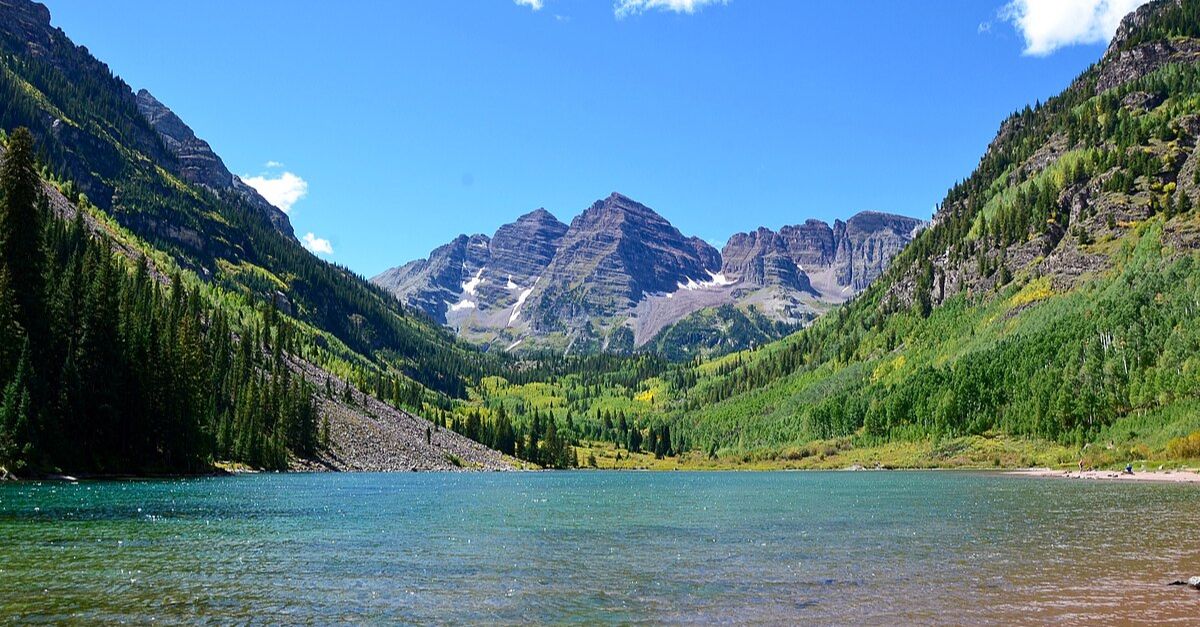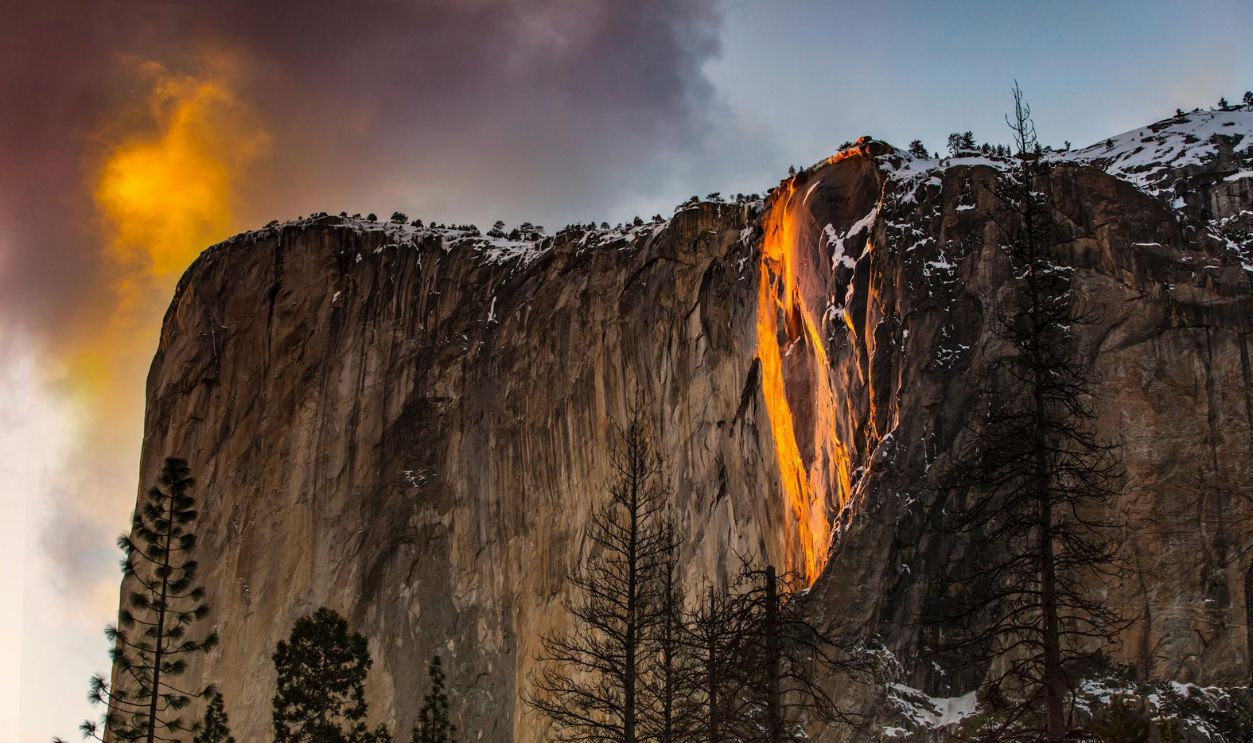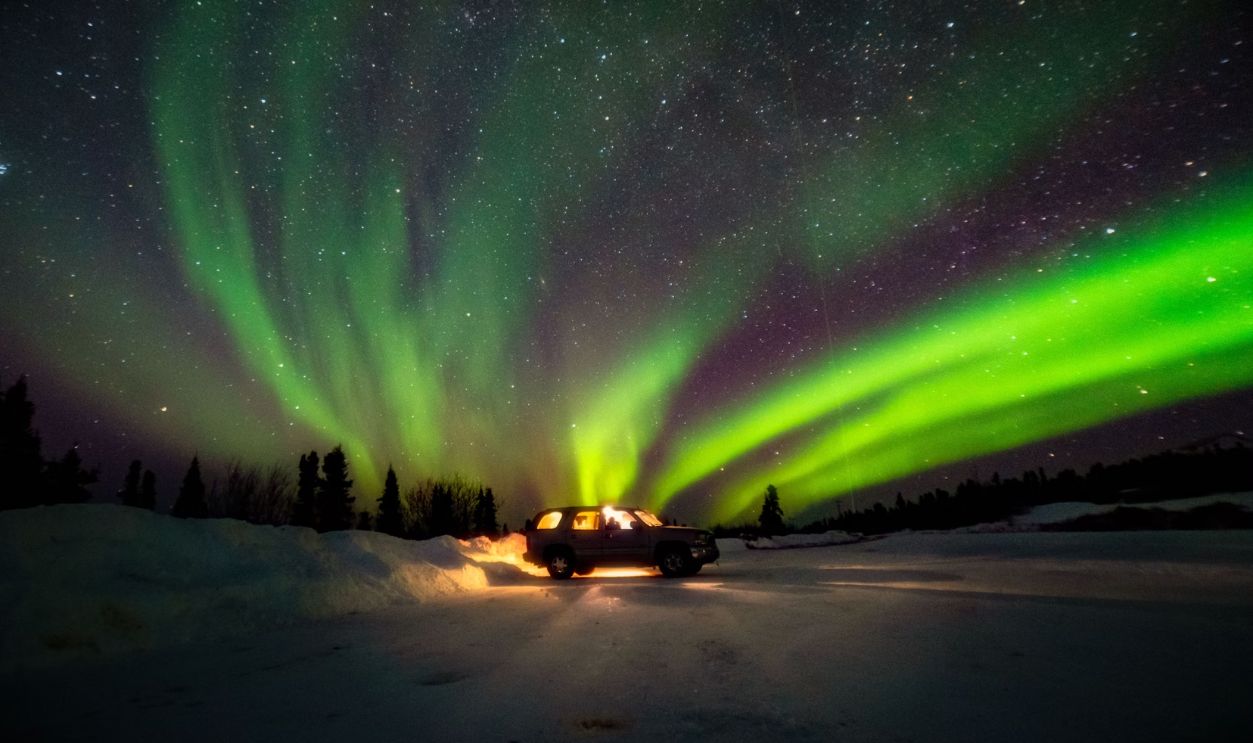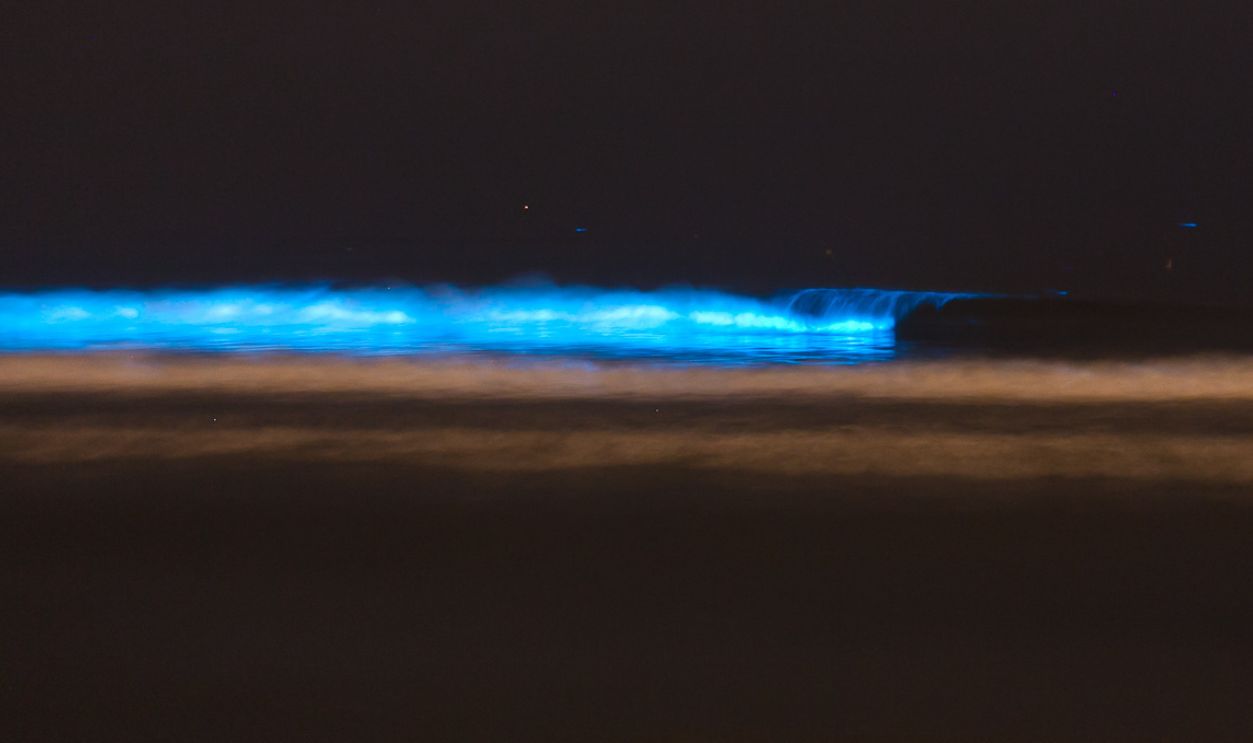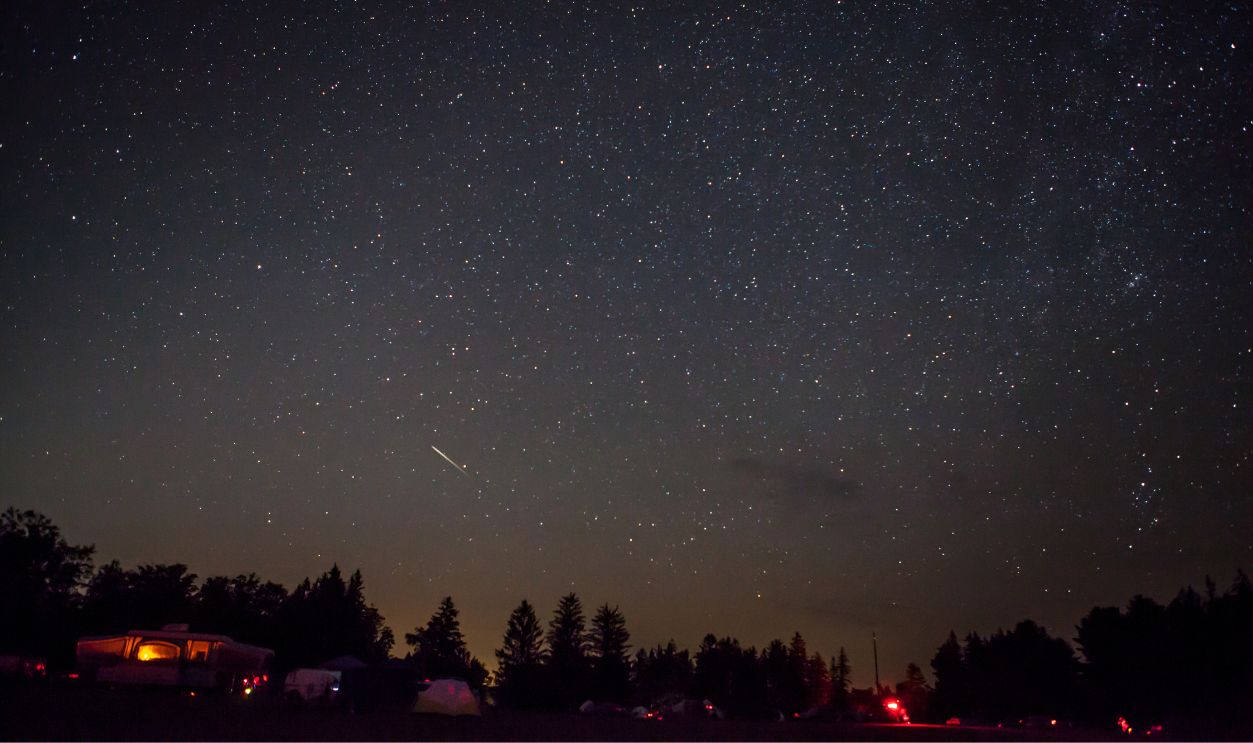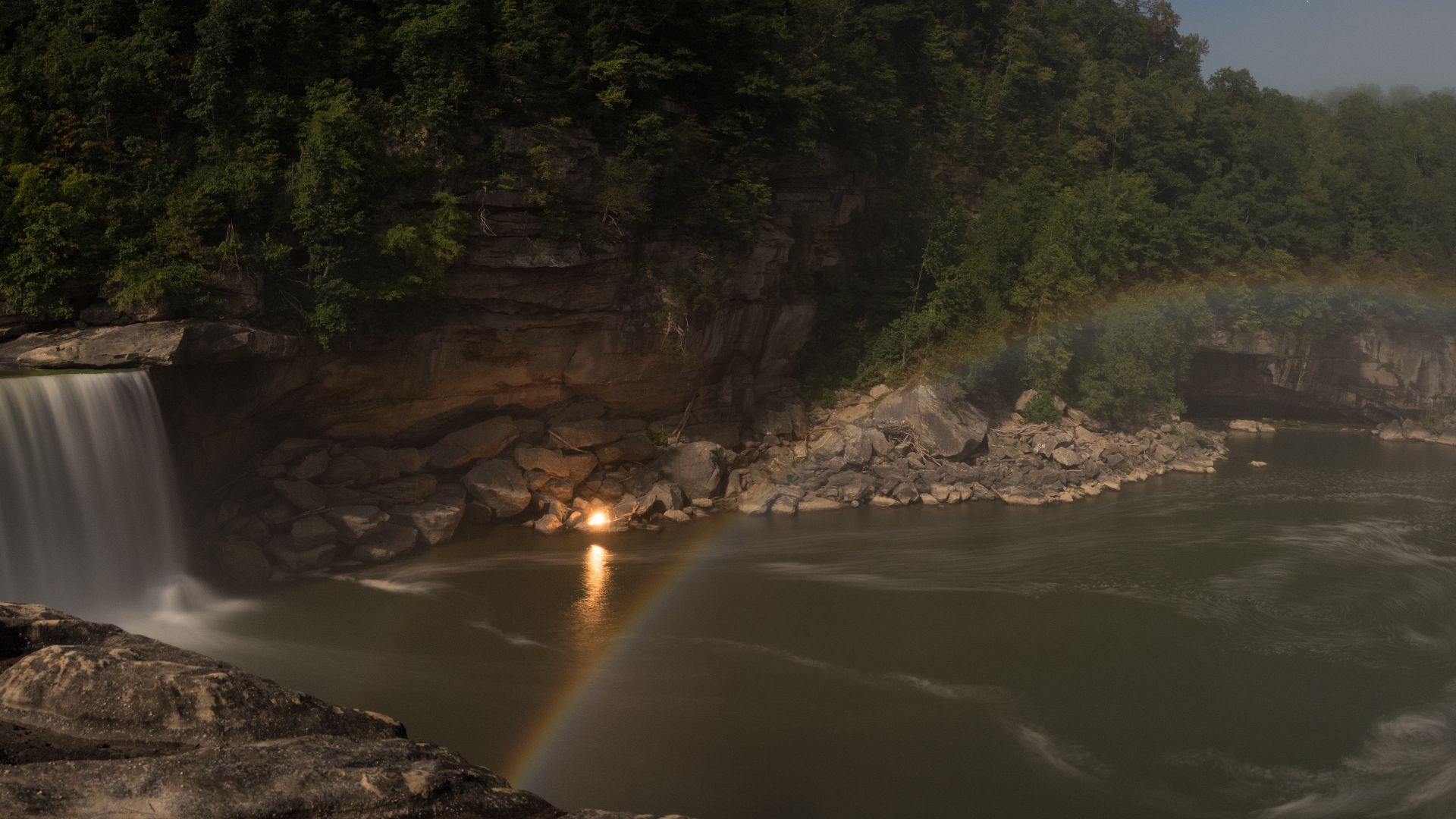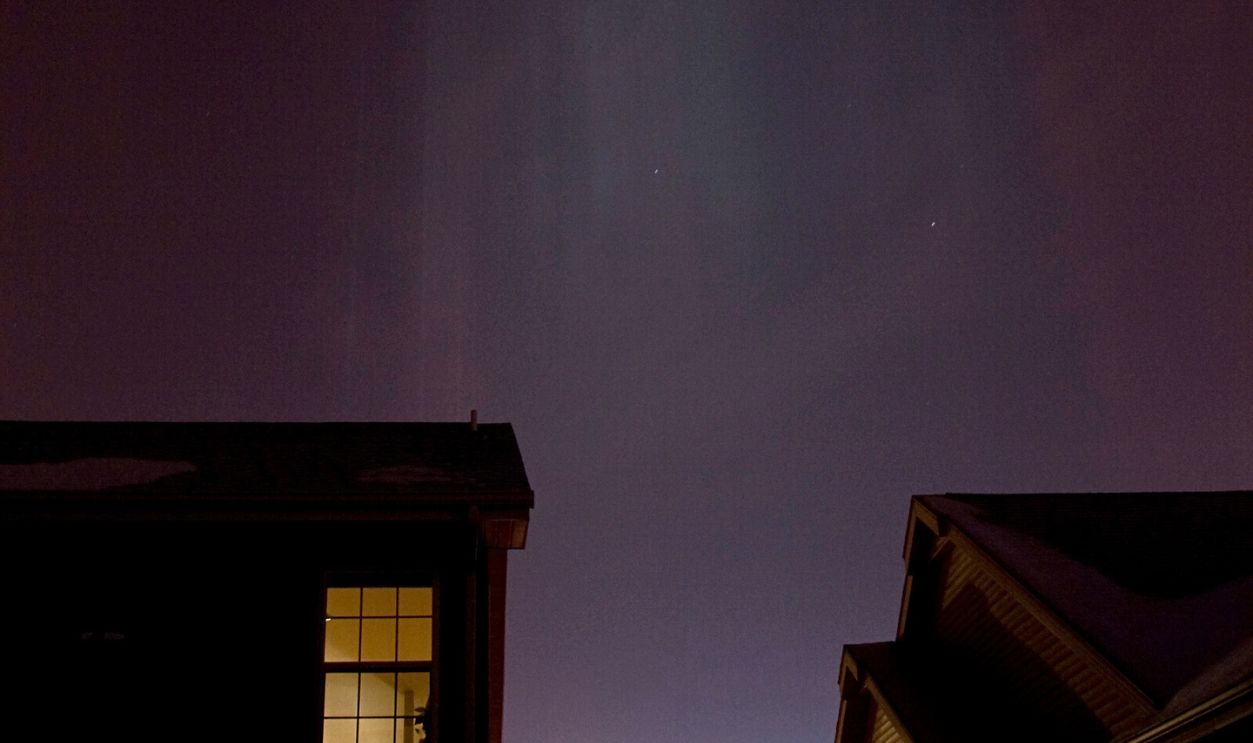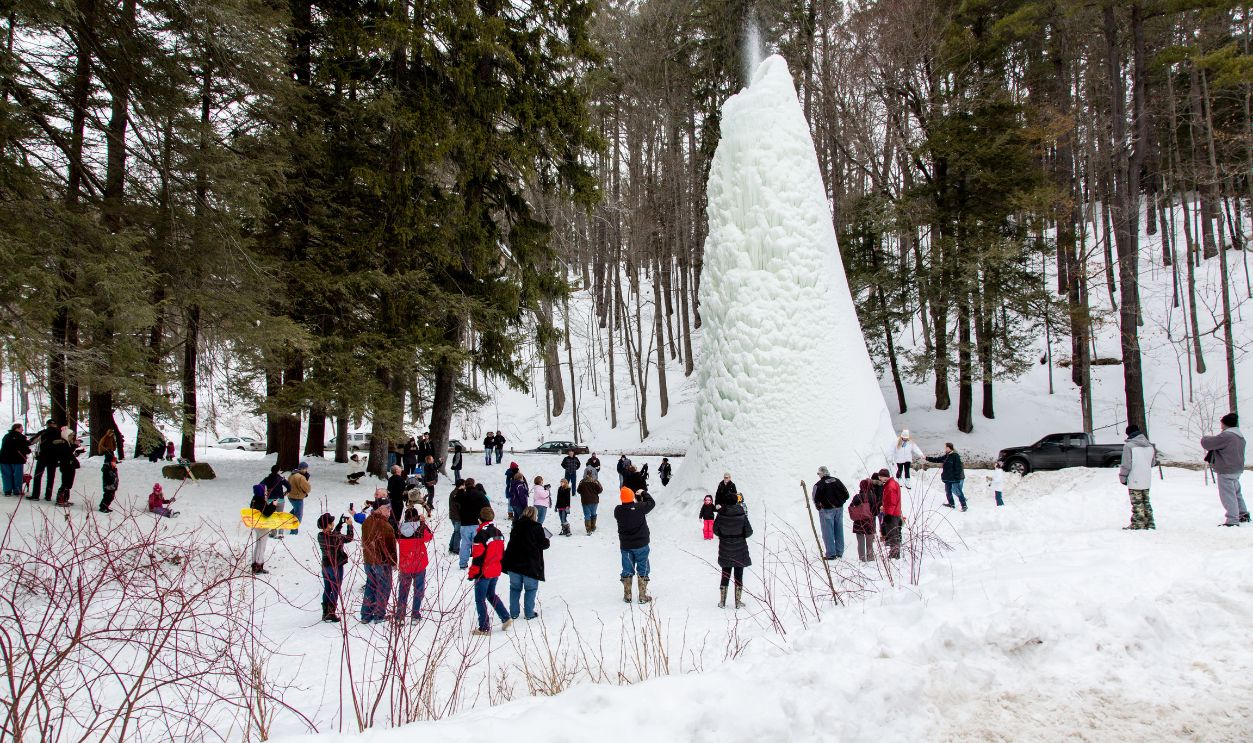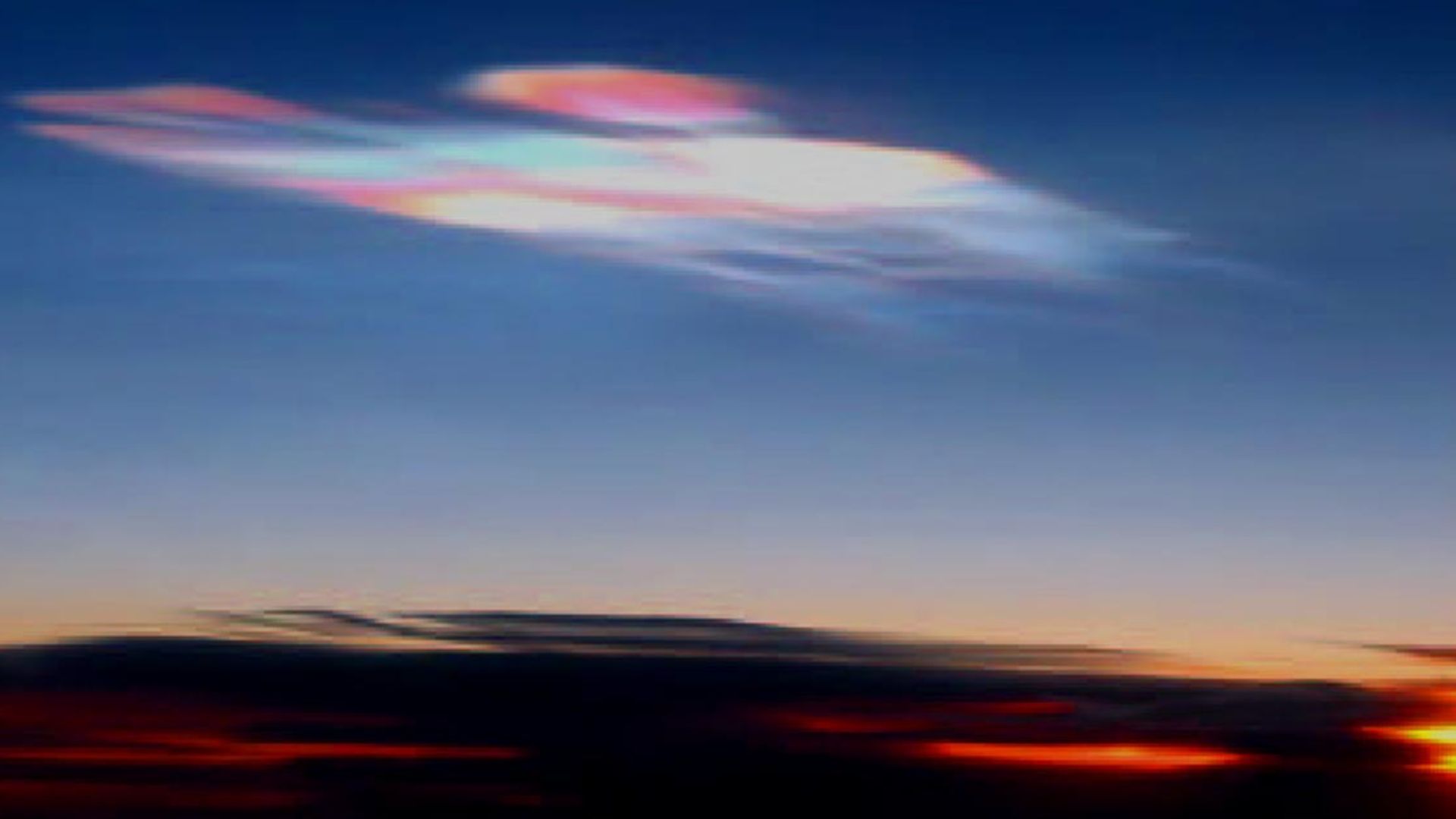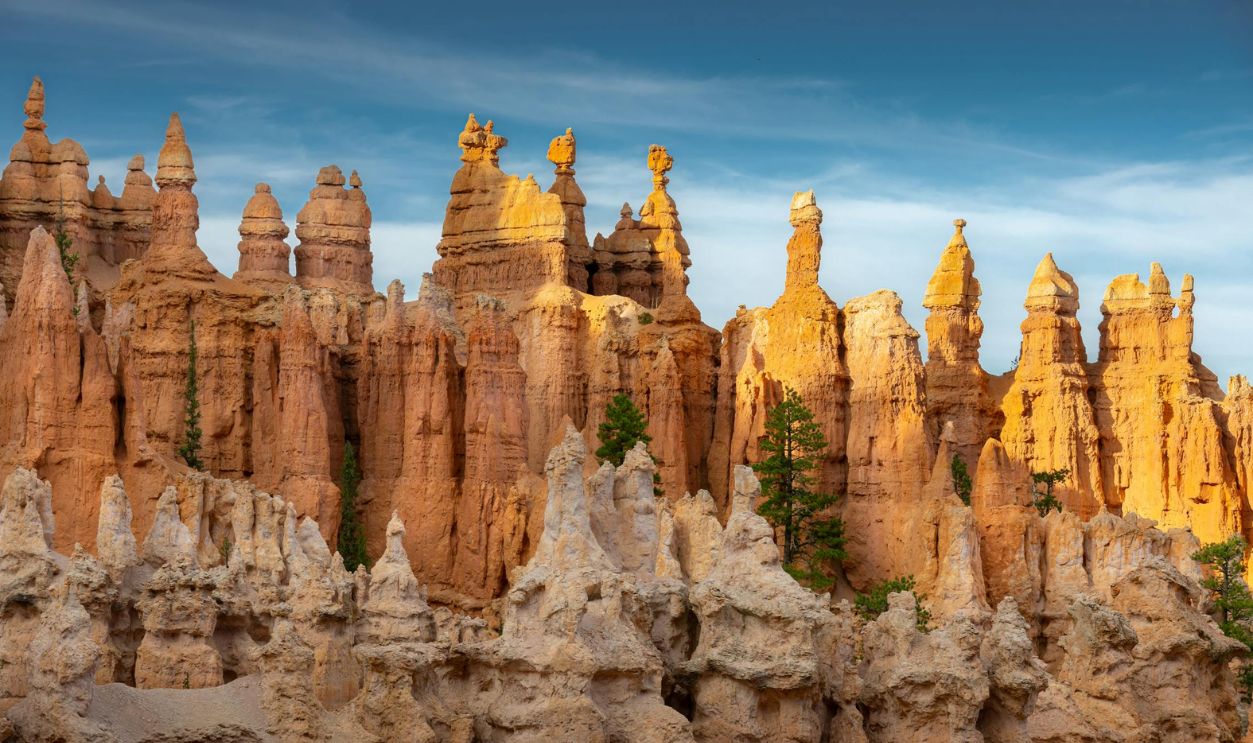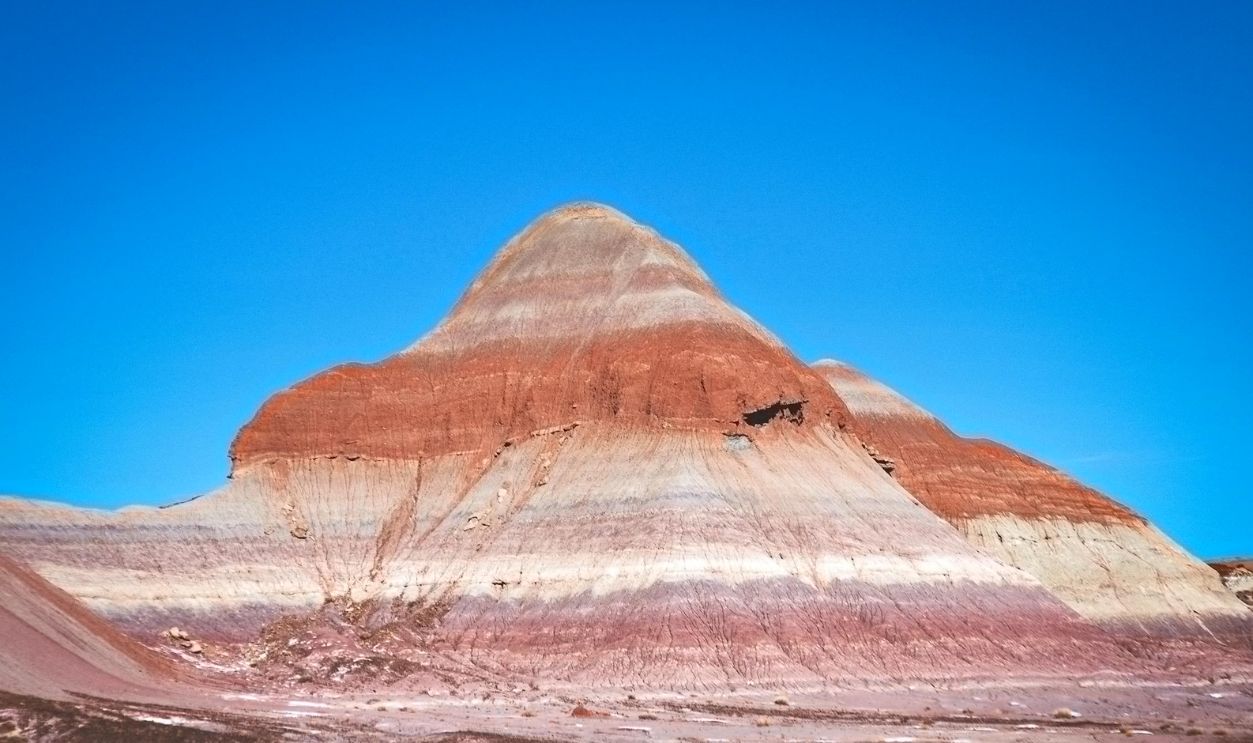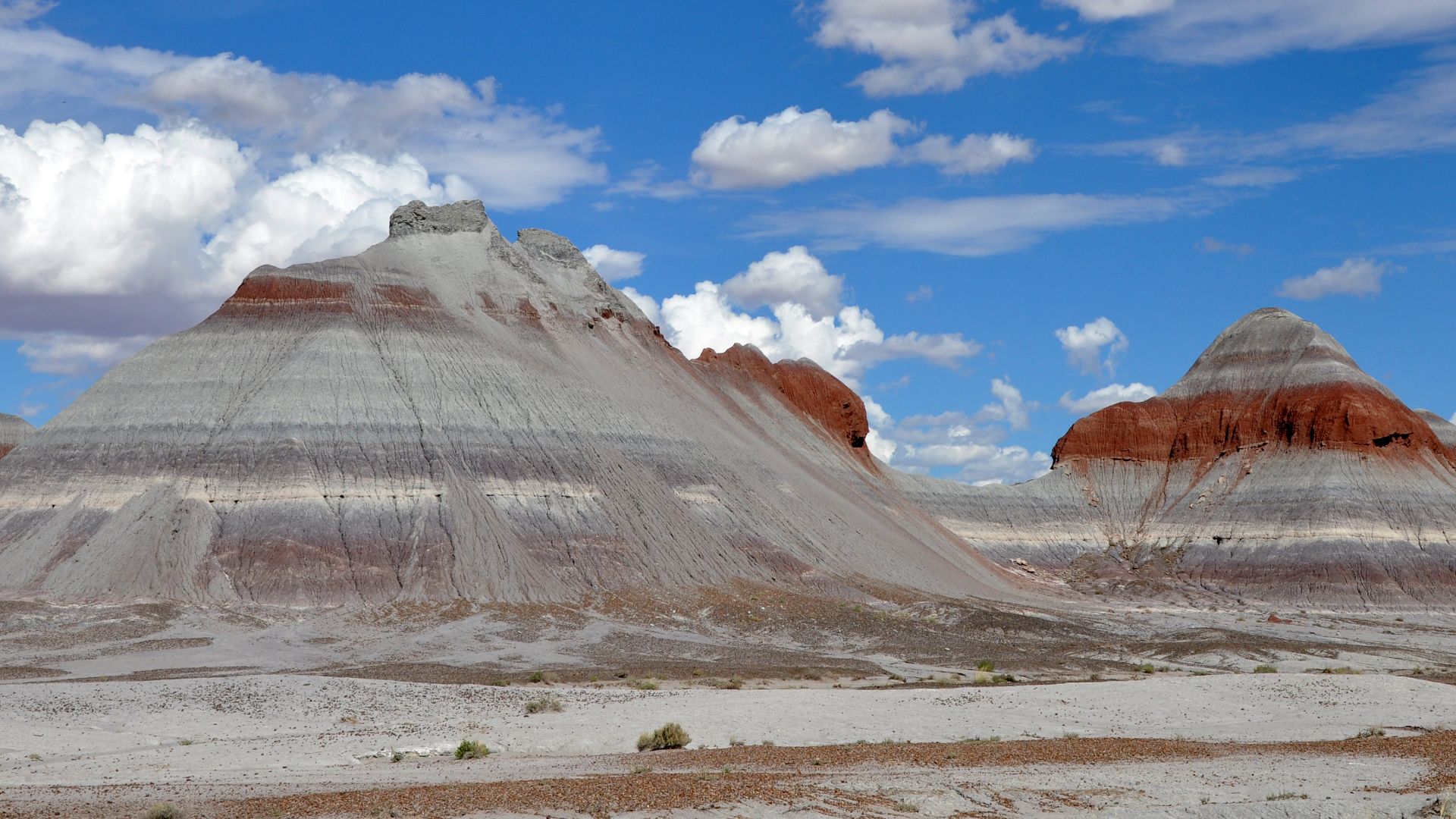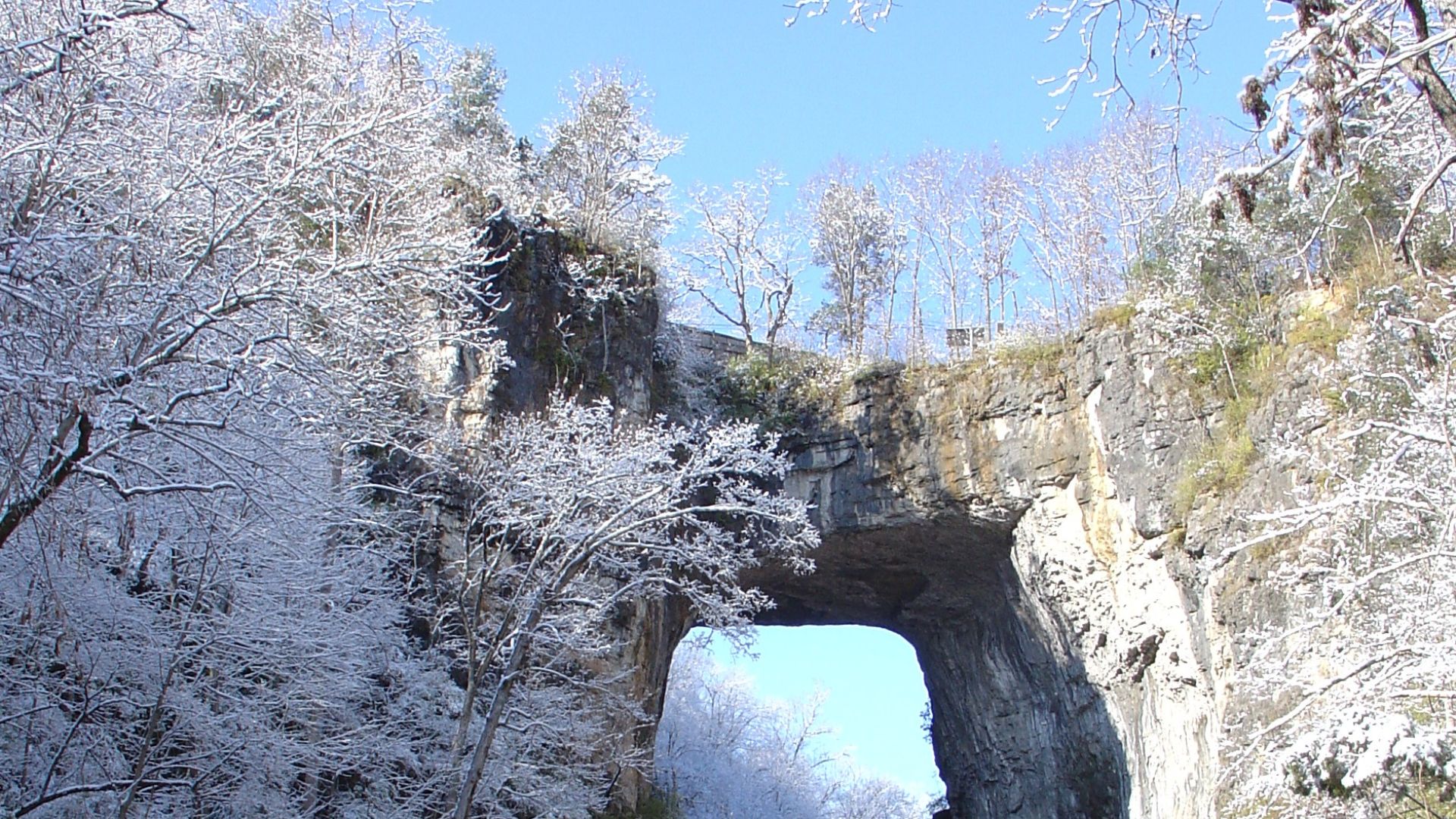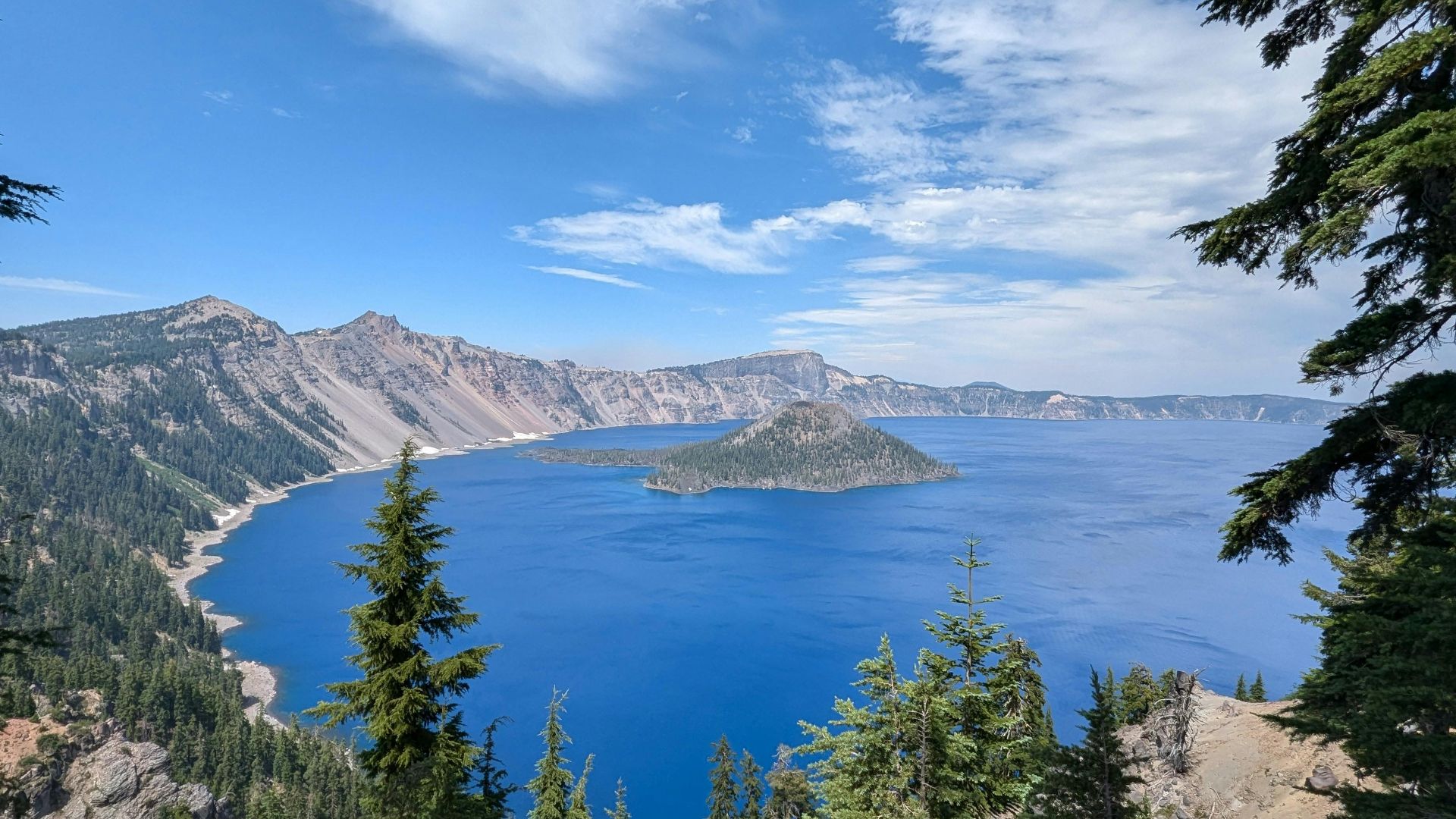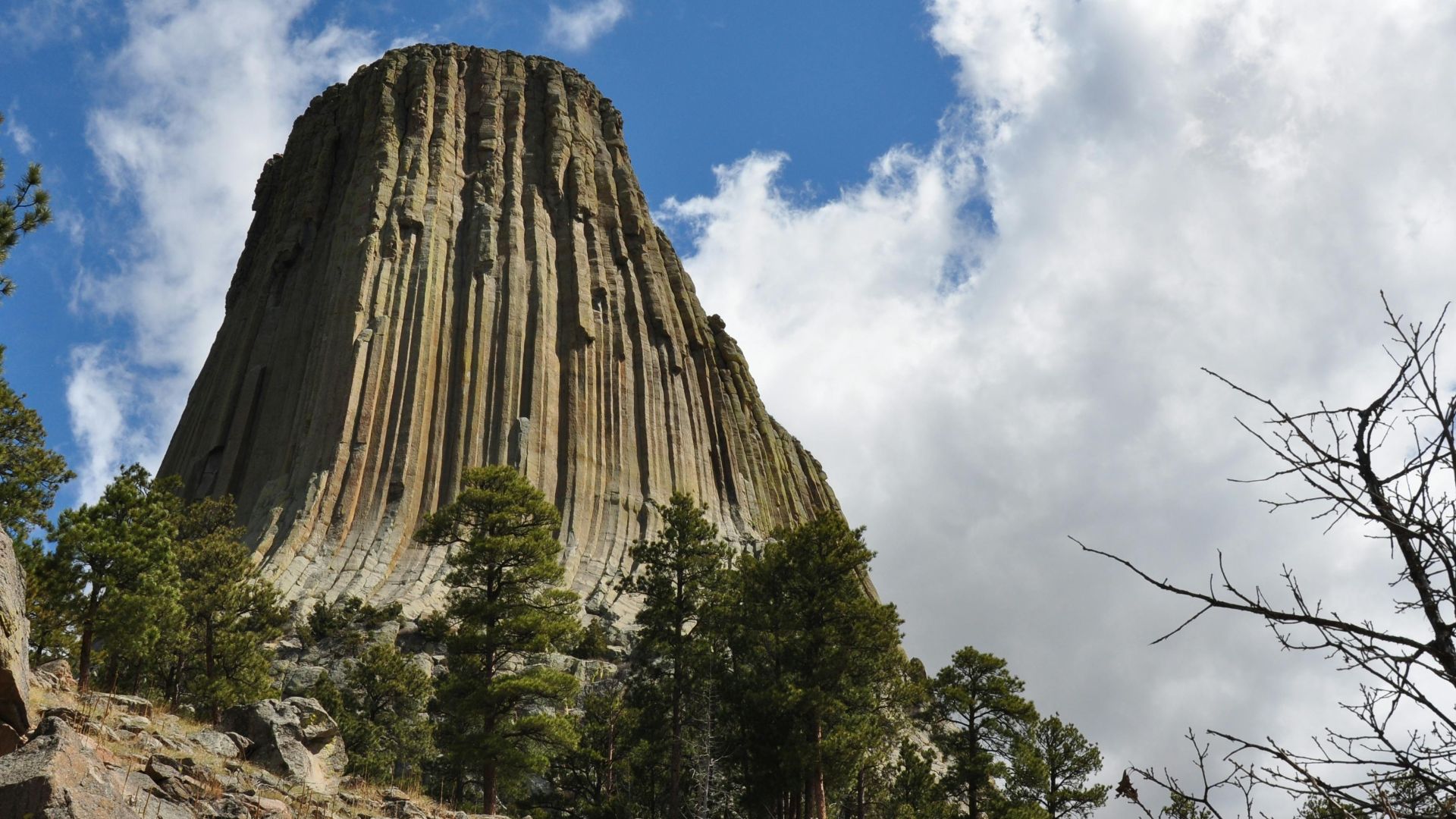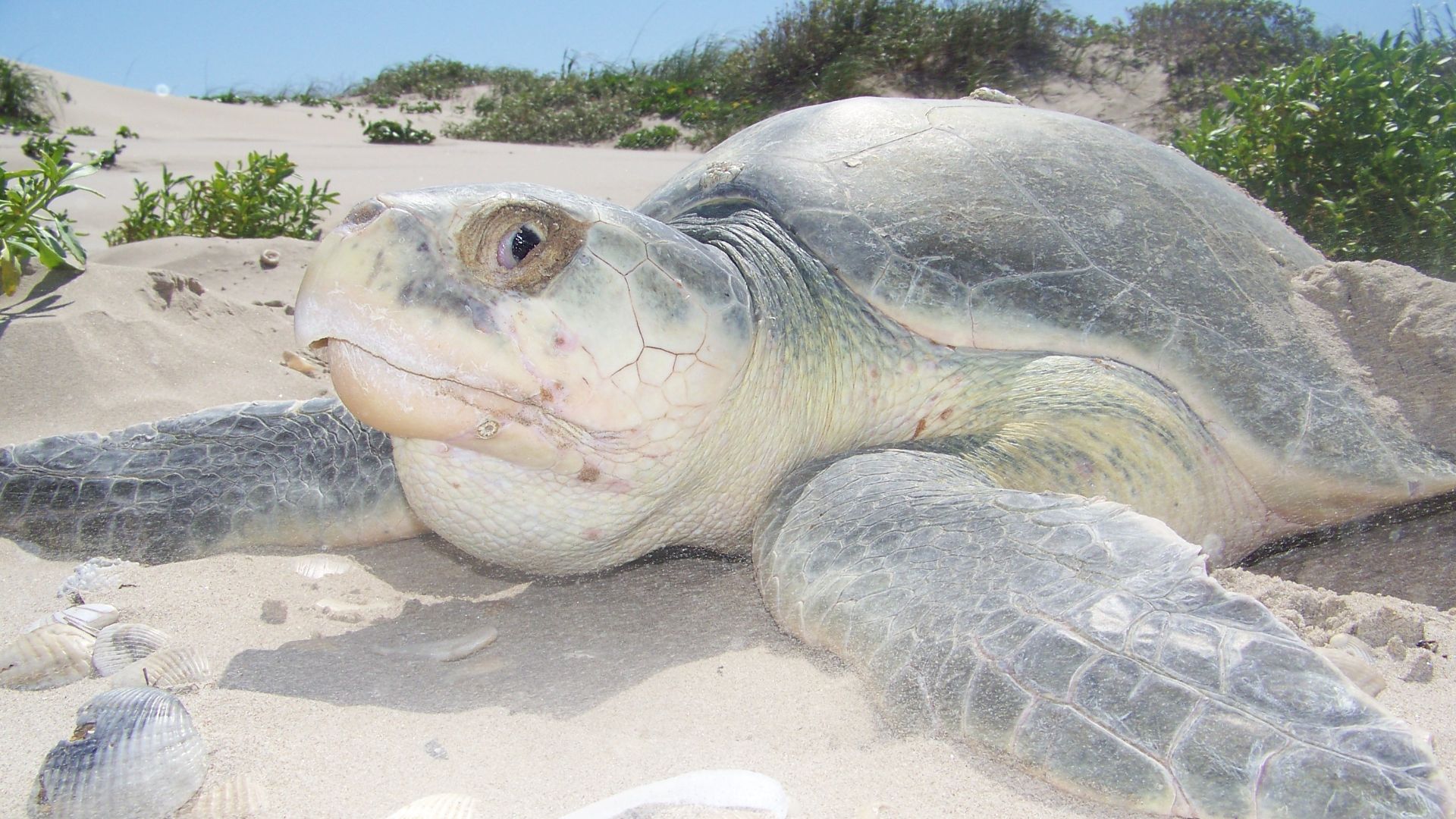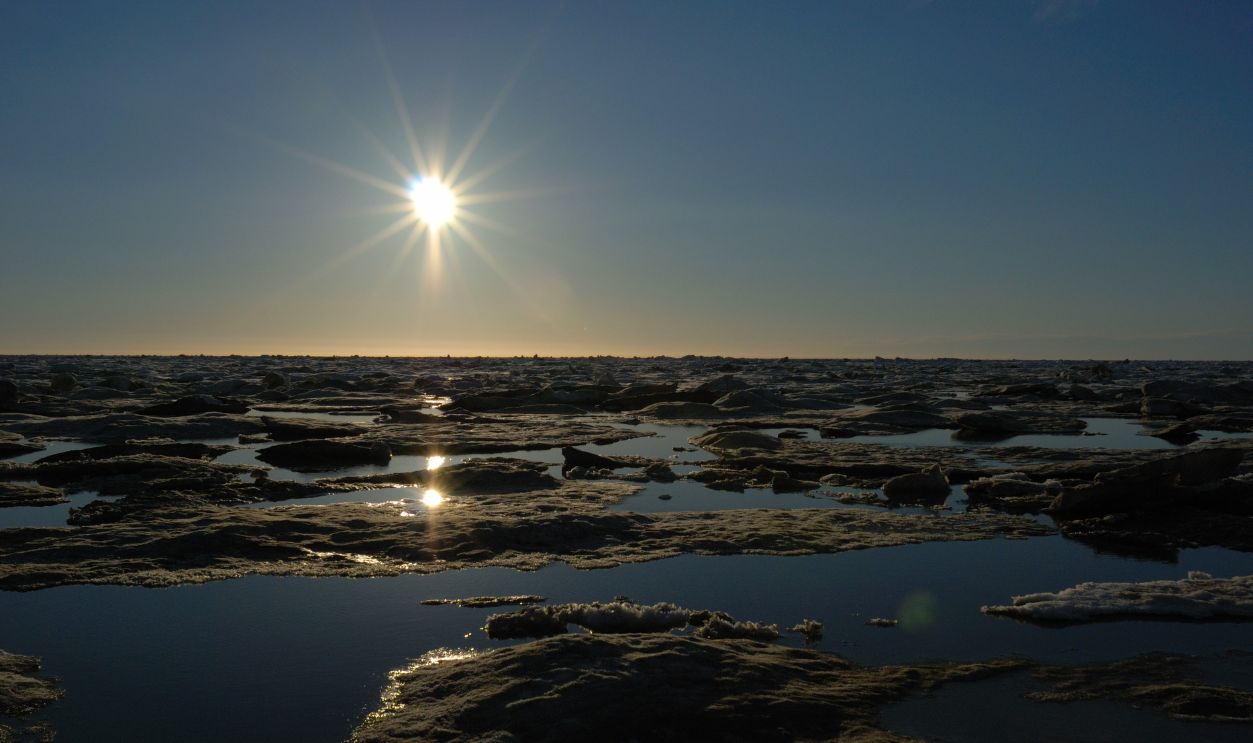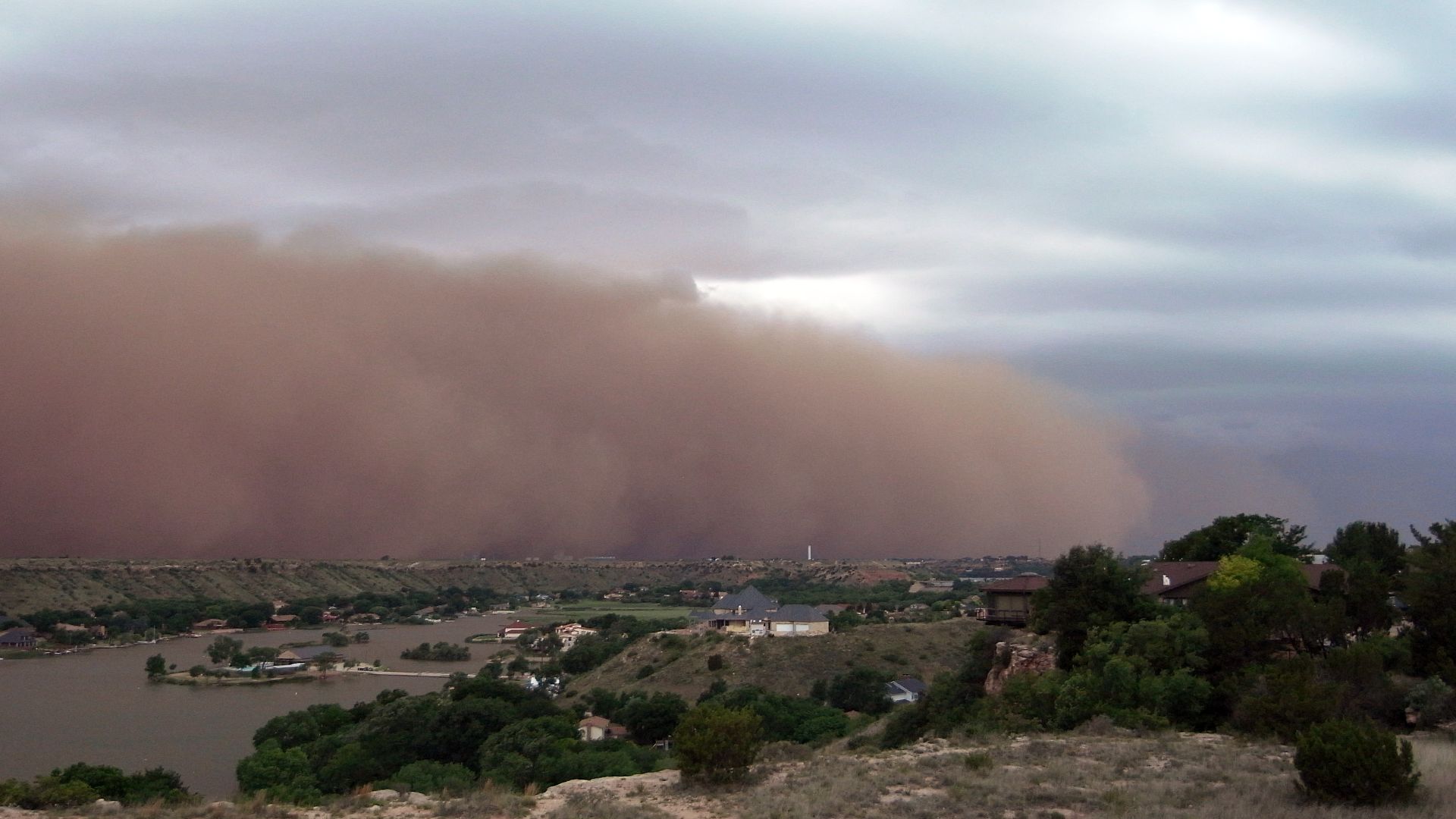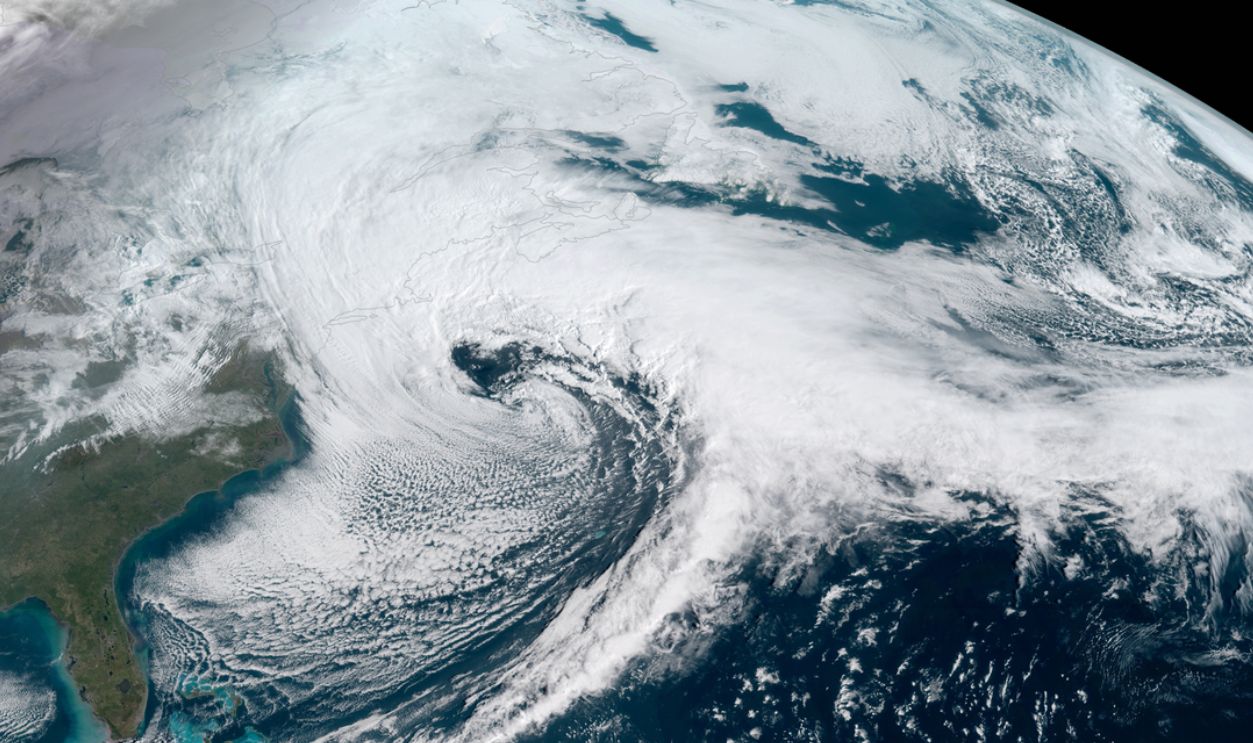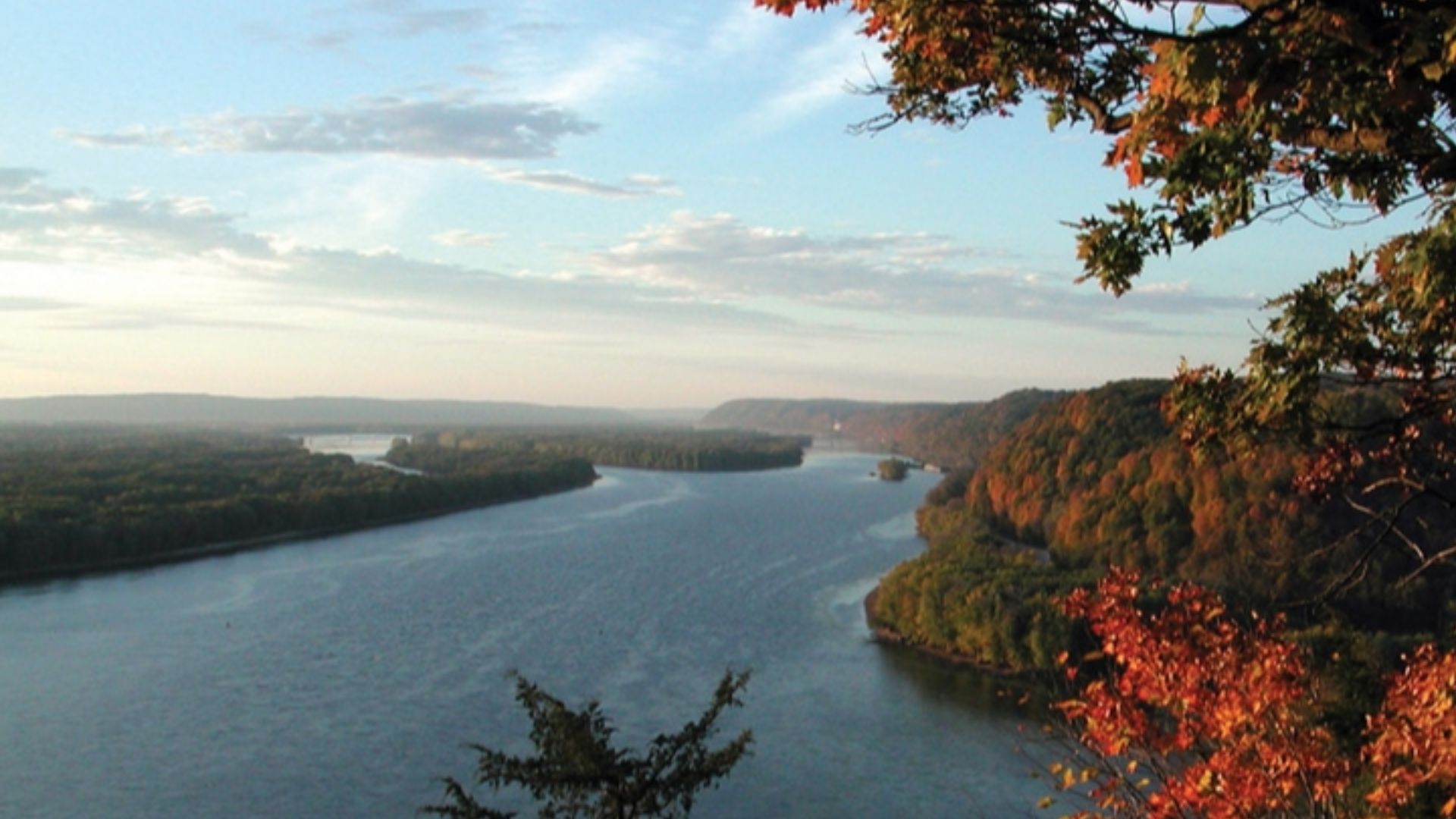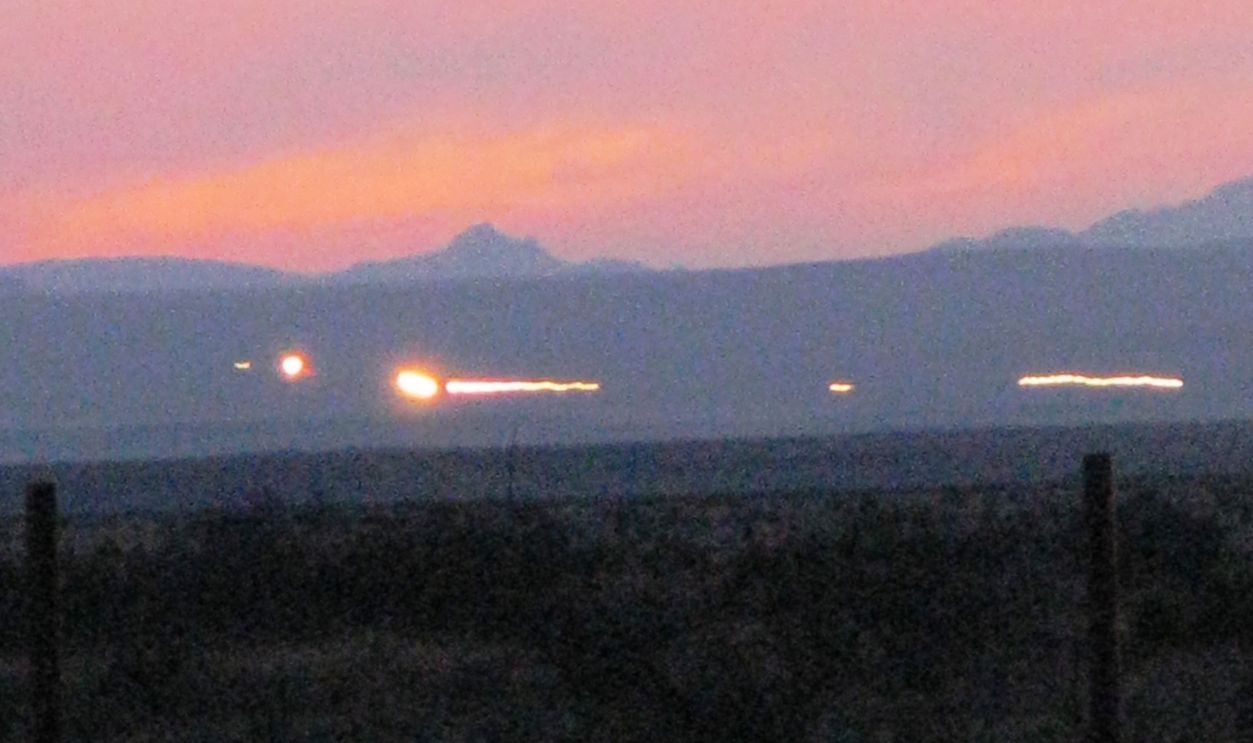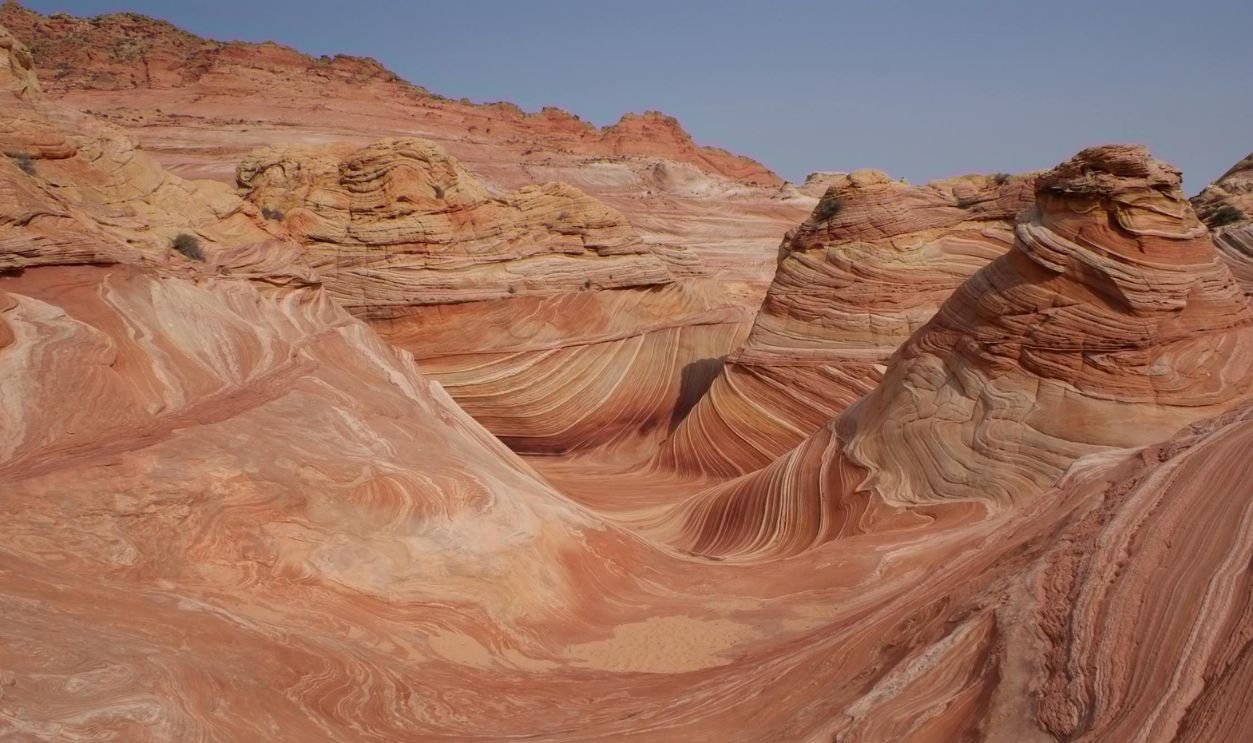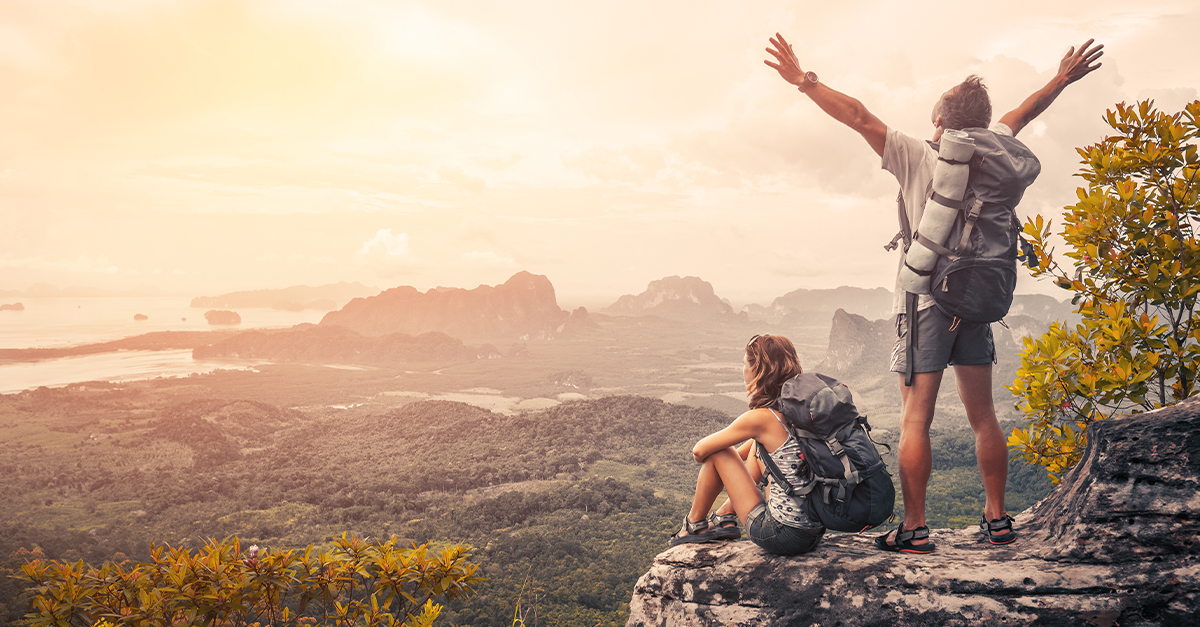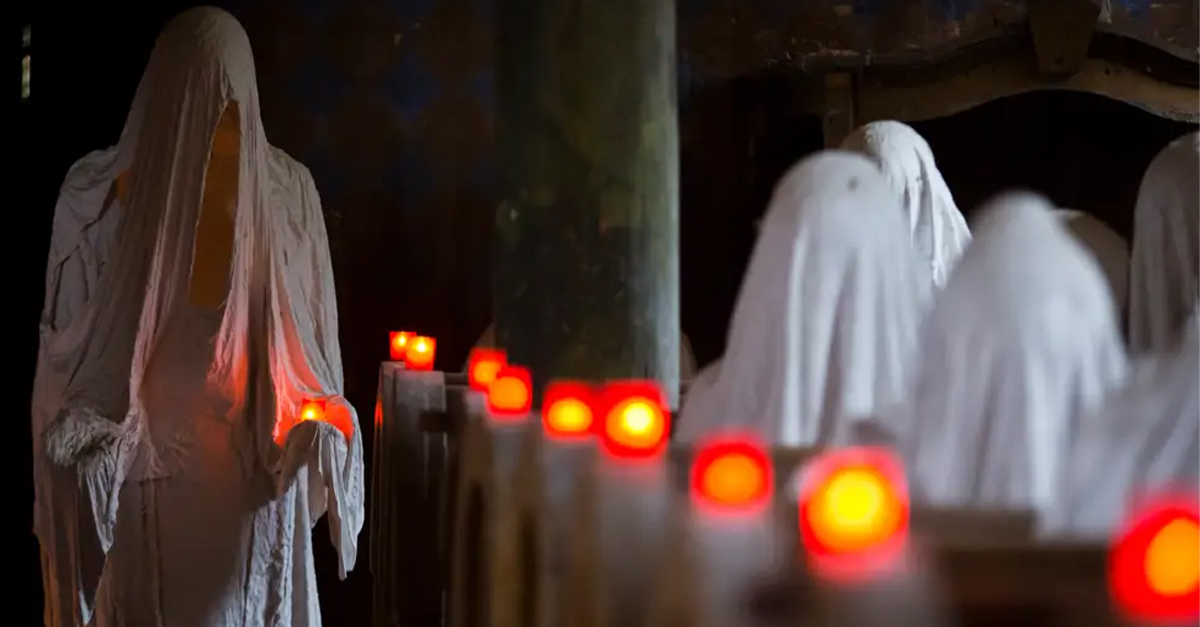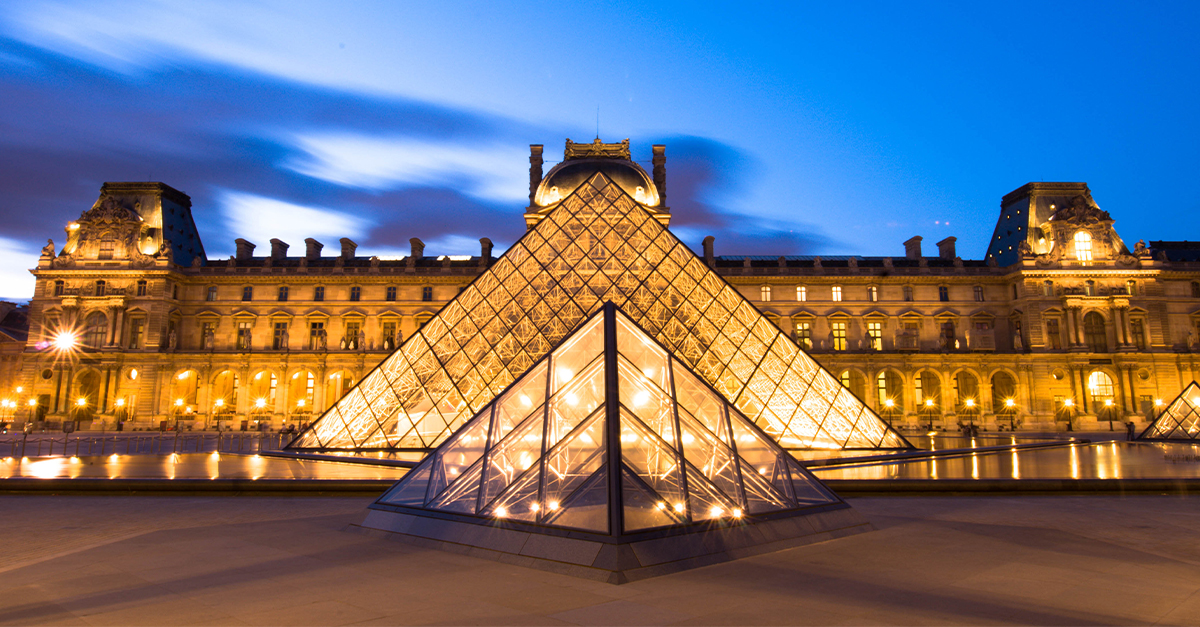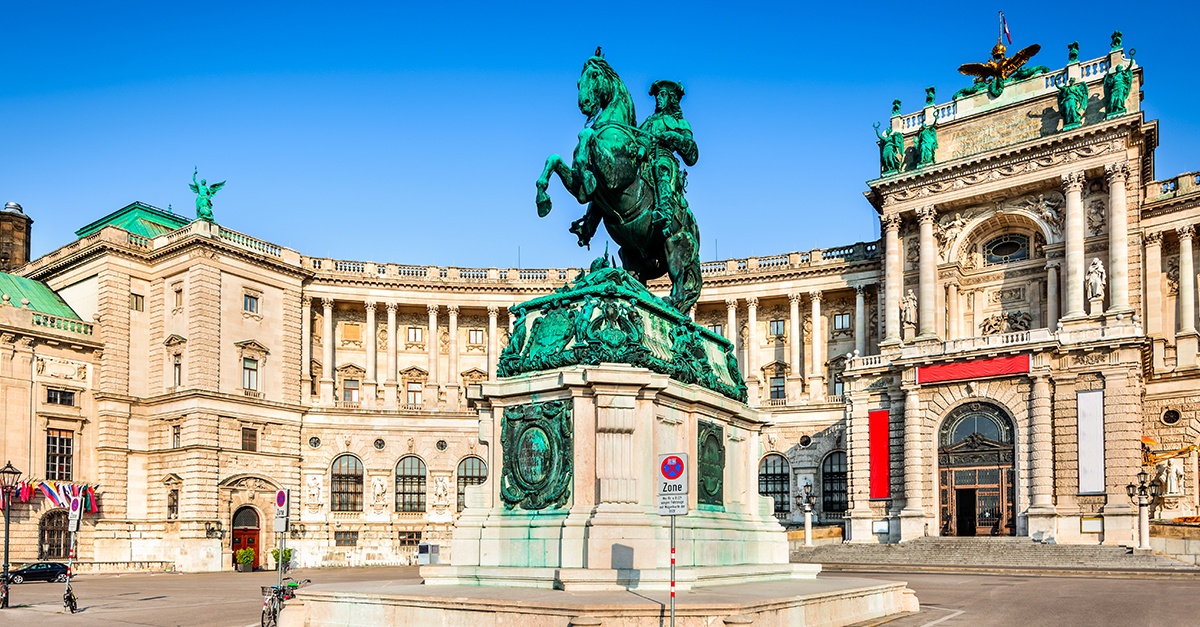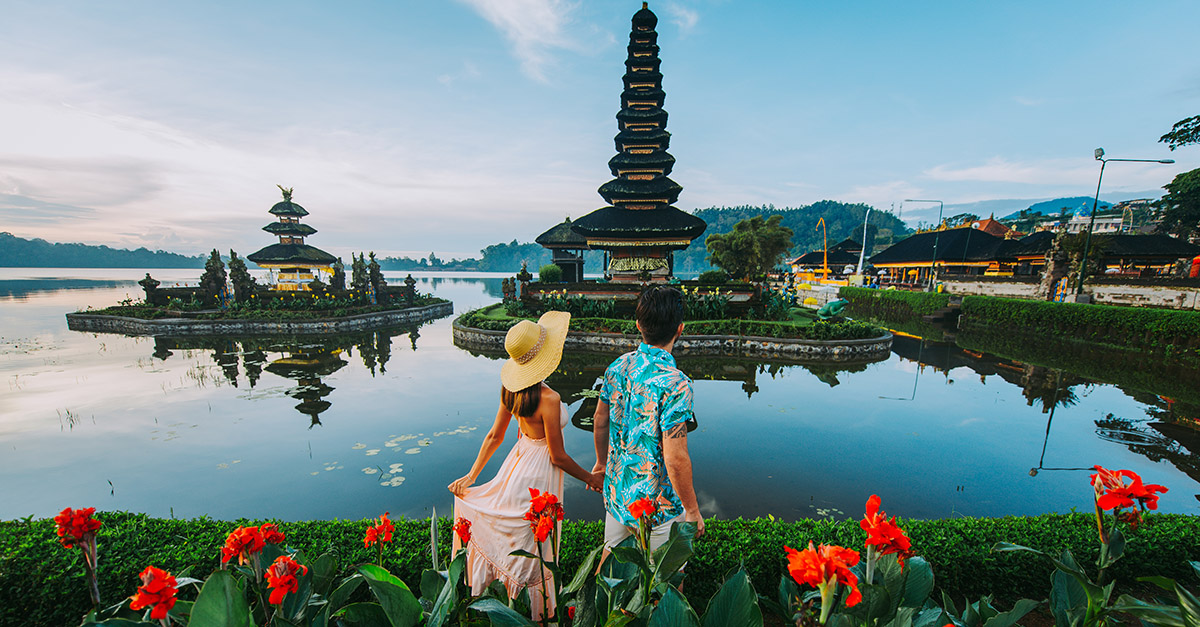Nature Doing Nature Things
Nature doesn’t wait for an audience. It just does its thing—loud, subtle, random, or ridiculously timed—right here on American soil.

The Fire-Like Waterfall Of Yosemite, California
Molten caramel cascades off a cliff at sunset during Yosemite’s Firefall. This phenomenon occurs at Horsetail Falls, located within the Park, where the water glows like lava every February due to a rare alignment of sunlight and stone.
Tornadoes, Tornado Alley
In Kansas, Oklahoma, and Texas, warm, humid air meets cool, dry air—ideal for tornadoes. These spinning funnels form in supercells and can reach 300 mph. Known as Tornado Alley, this region sees frequent storms. Farmers know the signs. It’s smart that you do, too.
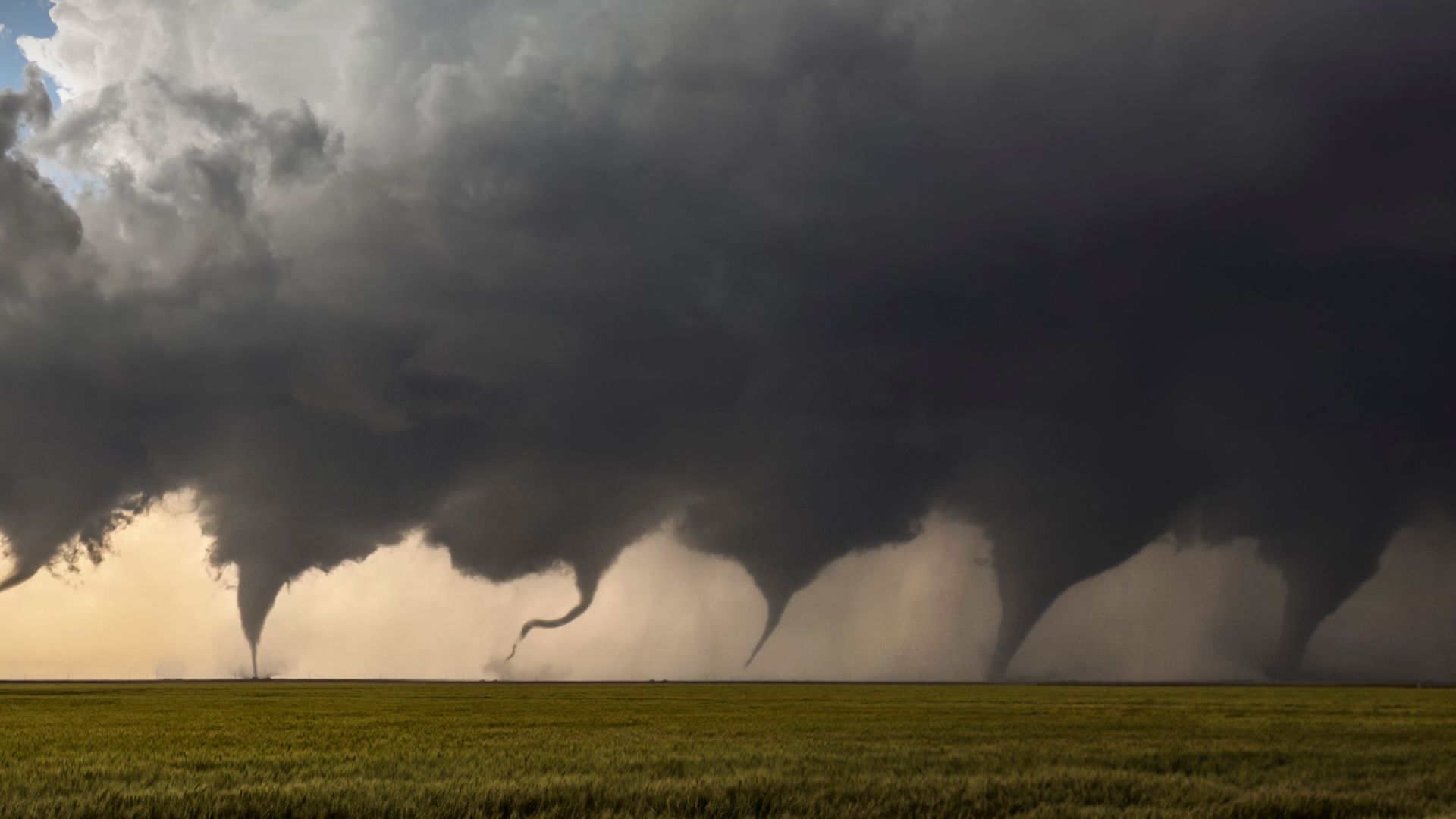 JasonWeingart, Wikimedia Commons
JasonWeingart, Wikimedia Commons
The Ice Circles, Maine's Rivers
Here’s a curious winter phenomenon: massive, slow-spinning ice discs that gently swirl on frigid rivers. These eerily perfect circles in Maine are created by eddies in freezing water. Locals often refer to them as “nature’s turntables”.
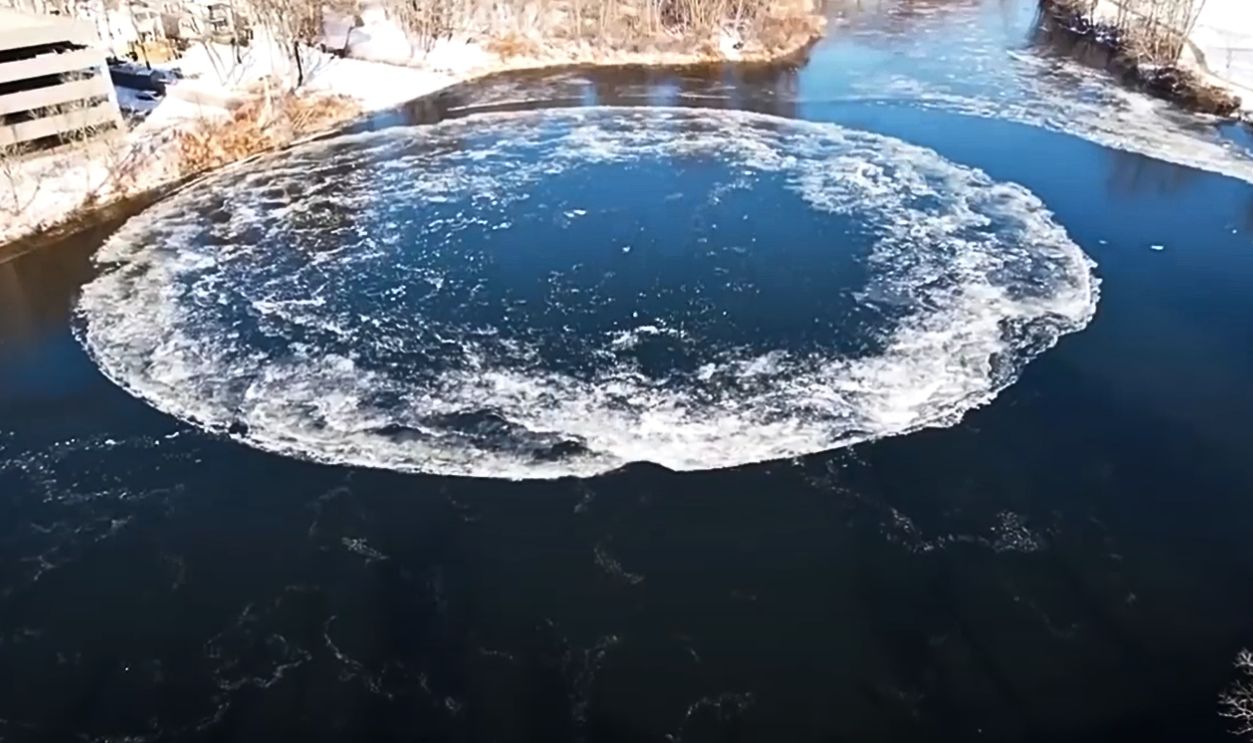 Large spinning ice disk forms on Presumpscot River in southern Maine by ABC News
Large spinning ice disk forms on Presumpscot River in southern Maine by ABC News
The Fire Rainbows, The Midwest Skies
These shimmering arcs burn across the sky in prismatic glory. Unlike regular rainbows, they show up in cirrus clouds when sunlight hits ice crystals just right. They’re rare and require the sun to be at least 58 degrees above the horizon.
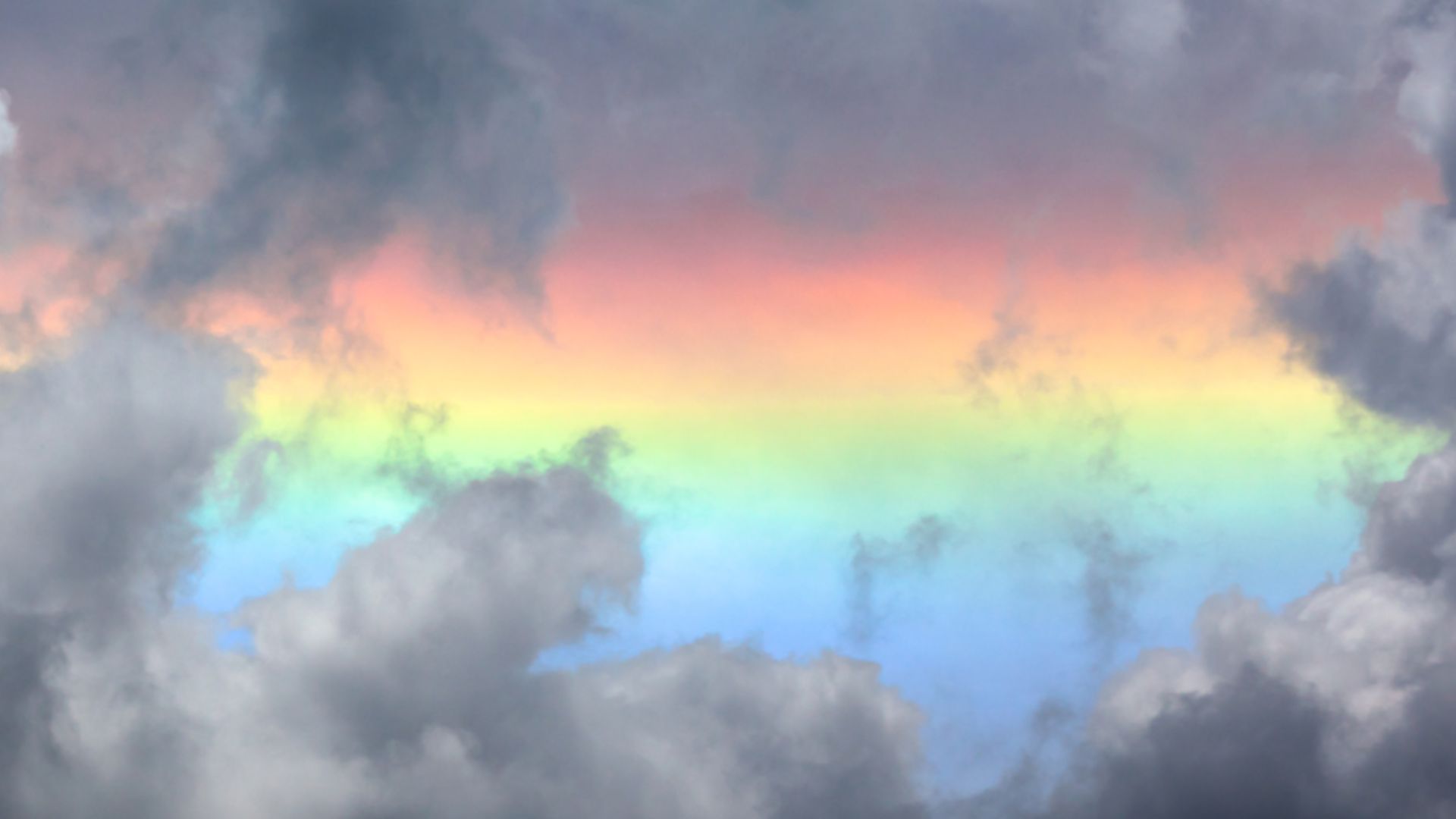 Ftech Oilfield, Wikimedia Commons
Ftech Oilfield, Wikimedia Commons
The Monarch Butterfly Migration, North America
Millions of monarchs flutter from Canada to Mexico as orange confetti tossed across the continent each fall. They fly thousands of miles, fueled only by milkweed and sunshine. This here is a miracle, not a mystery.
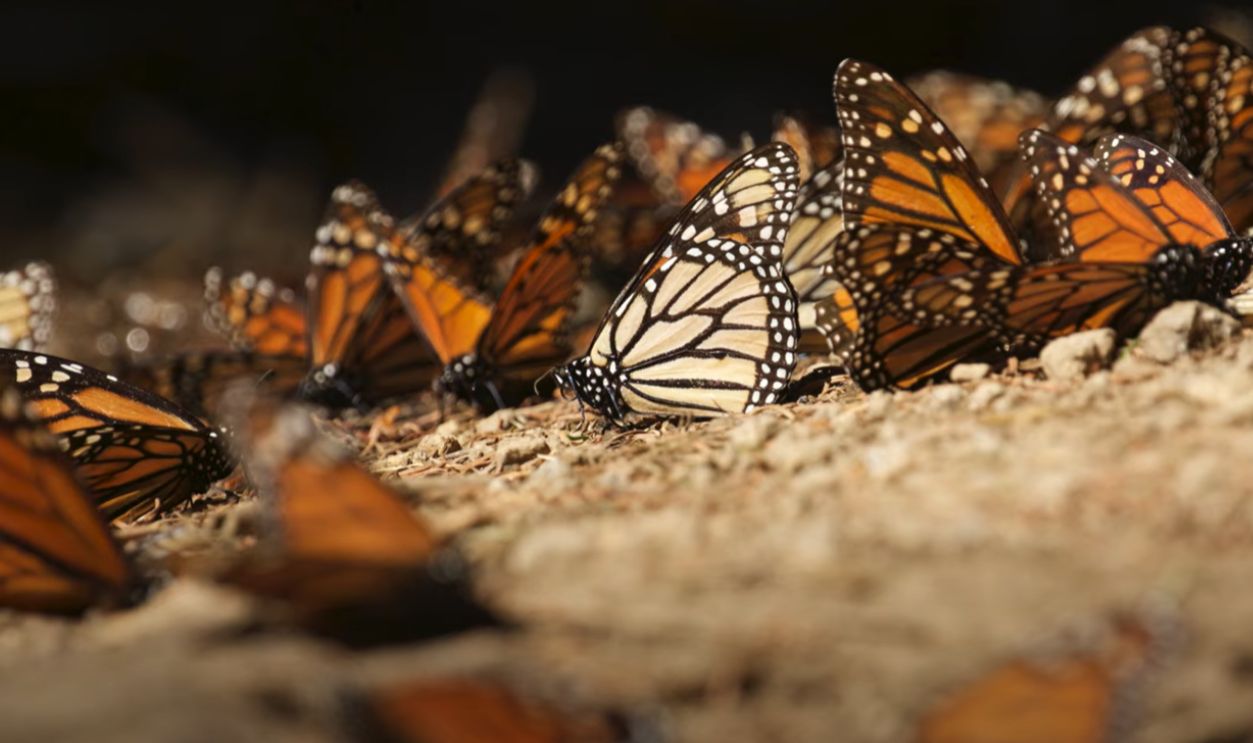 Monarch Butterflies: Great Migration by Boyd Matson
Monarch Butterflies: Great Migration by Boyd Matson
The Aurora Borealis, Alaska's Winter Skies
Imagine green ribbons dancing across a dark velvet backdrop—that’s the aurora borealis. Seen best in Alaska, this polar light show is caused by solar winds hitting Earth’s magnetosphere. Stargazing here is a moment you’d want to remember.
The Grand Prismatic Spring's Vibrant Colors, Yellowstone
Yellowstone’s jewel: Grand Prismatic Spring sizzles like a rainbow soup, thanks to heat-loving bacteria and minerals. Bigger than a football field, it paints the land with orange, teal, and gold strokes. This is possibly Mother Earth’s stew pot.
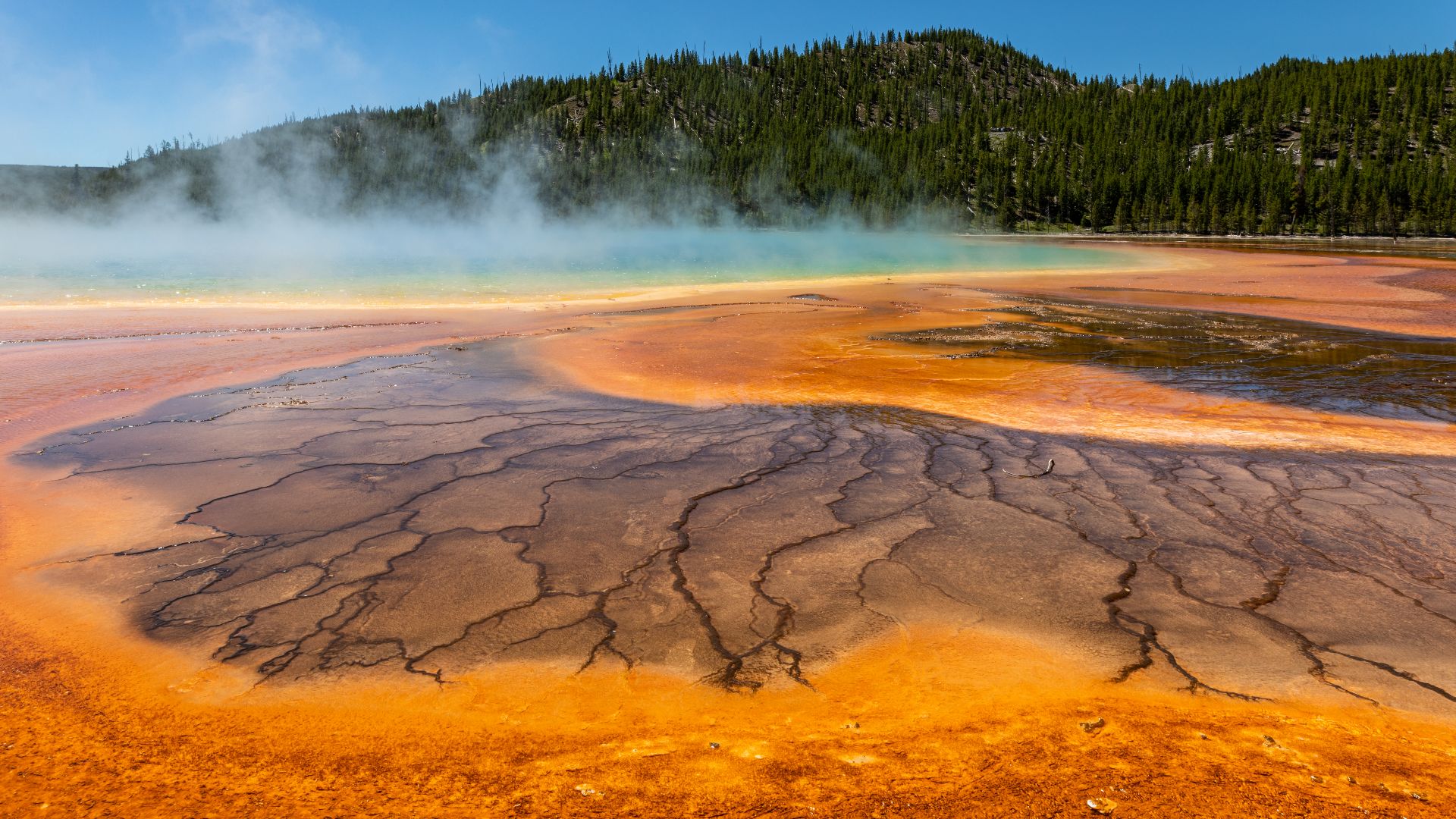 Dietmar Rabich, Wikimedia Commons
Dietmar Rabich, Wikimedia Commons
The Sailing Stones, Death Valley's Racetrack Playa
Stones gliding across desert flats without human touch? Yep, it happens in Death Valley. Here, rocks leave trails behind them, thanks to a cocktail of ice, water, and breeze. This rare geological and climatic interaction is known as “sailing stones”.
 Daniel Mayer (mav), Wikimedia Commons
Daniel Mayer (mav), Wikimedia Commons
The Bioluminescent Waves, San Diego's Beaches
The ocean lights up electric blue, glowing with every splash due to bioluminescent dinoflagellates. This natural light show is caused by microscopic organisms emitting light when disturbed to create a surreal event.
The Meteor Showers, Pennsylvania's Cherry Springs State Park
Cherry Springs State Park delivers some of the best stargazing east of the Mississippi. Its exceptionally dark skies, free from light pollution, make it a prime spot for observing celestial events like meteor showers (and occasionally the Northern Lights).
The Tidal Bore Waves Of Turnagain Arm, Alaska
Rush hour here involves a single, roaring wave speeding backward through the river due to the narrow inlet. Turnagain Arm’s tidal bore rides in on incoming tides, and it stretches up to 10 feet high, which surfers ride like pros.
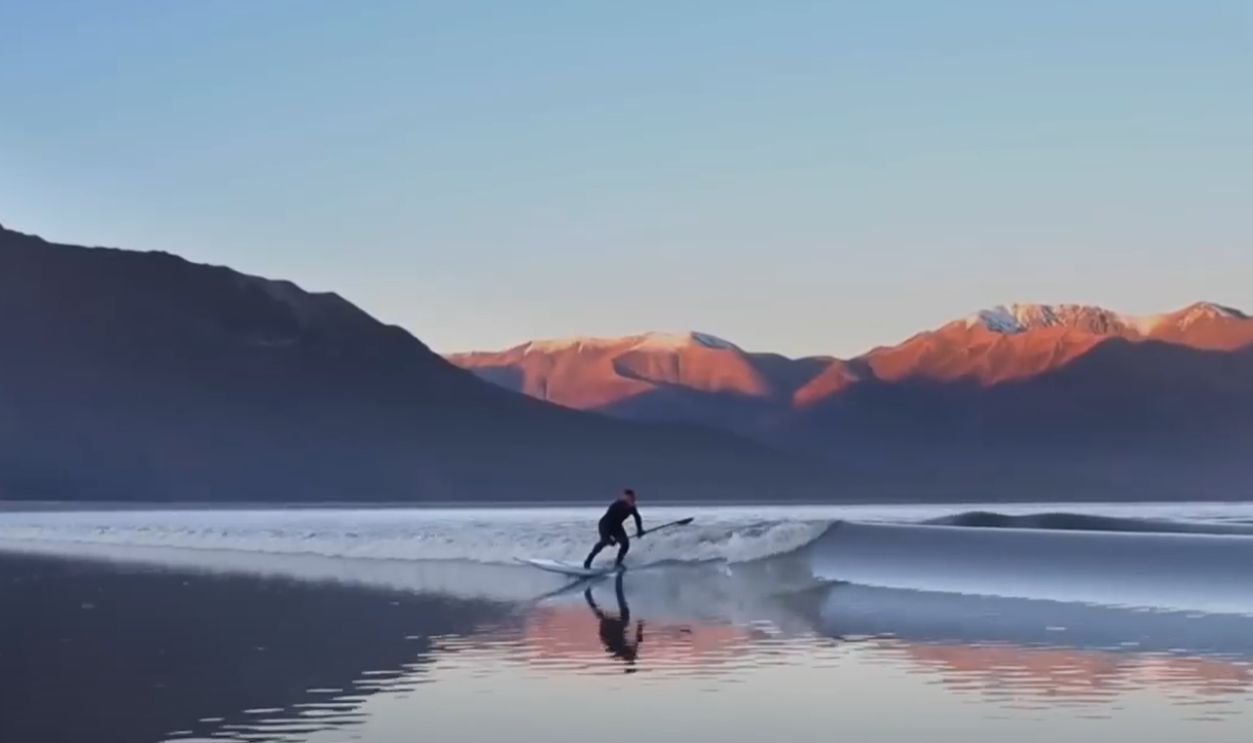 Surfer Rides Alaska's Turnagain Arm Bore Tide by Storyful Viral
Surfer Rides Alaska's Turnagain Arm Bore Tide by Storyful Viral
The Moonbows Of Cumberland Falls, Kentucky
Called moonbows, these rare arcs shimmer under full moons at Cumberland Falls at night. Mist, moonlight, and silence merge like a perfectly plated trifle. They’re rare and deeply mesmerizing. If you blink, they vanish into legend.
The Alpenglow Of The Chugach Mountains, Alaska
Pink frosting on jagged mountain peaks is what you see at the Alpenglow. As the sun ducks below the horizon, it lights up snowy ridges in flamingo pinks and tangerine tones. You don’t chase it—you quietly wait and let it melt over you.
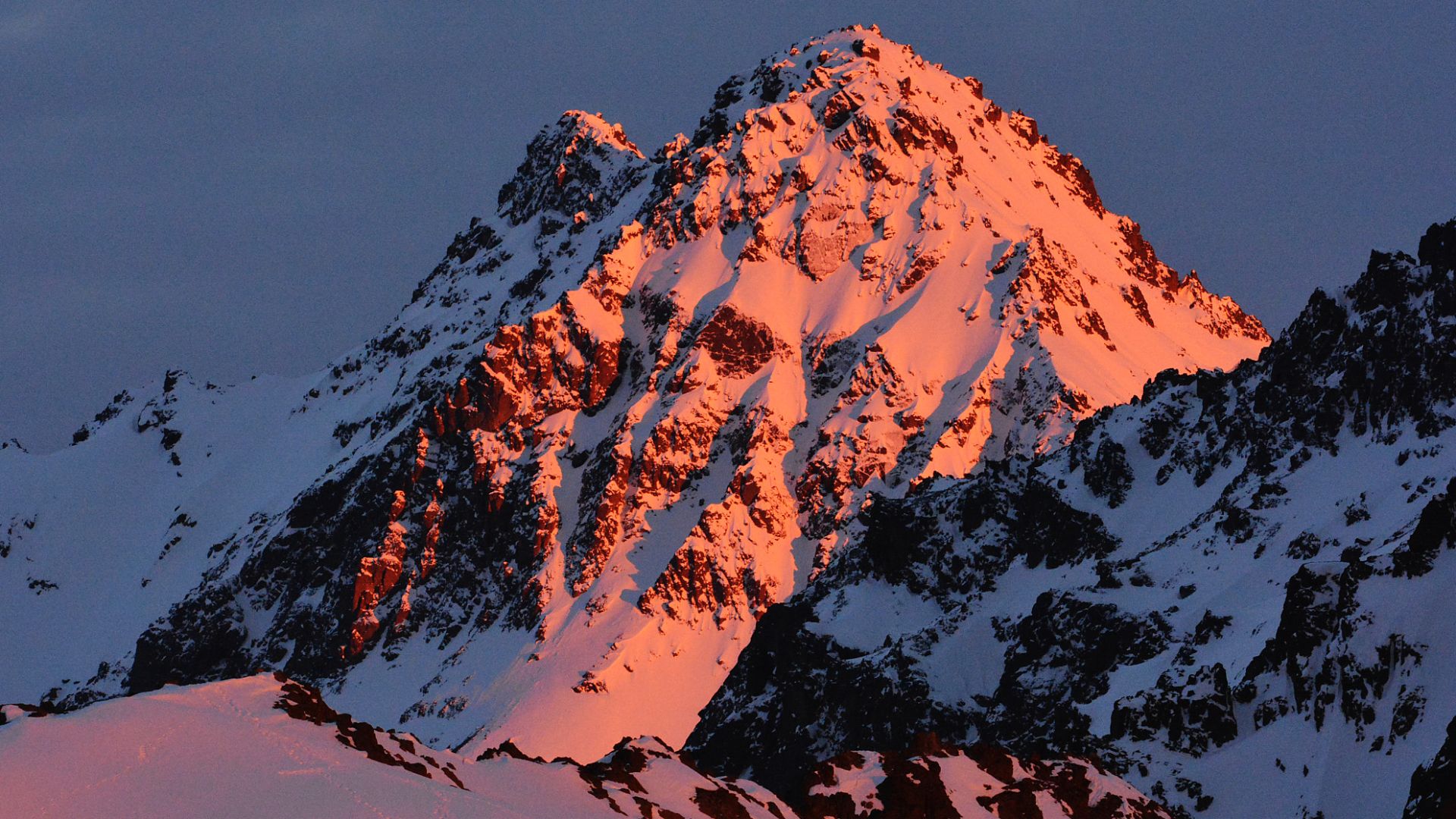 Paxson Woelber, Wikimedia Commons
Paxson Woelber, Wikimedia Commons
The Ice Volcanoes, Lake Michigan Shores
No lava here, just ice hurling slush skyward from frozen cones. These frosty volcanoes erupt when waves press under the shoreline ice and blast upward. Only winter chefs like Michigan’s lakefront can cook up such chilly chaos.
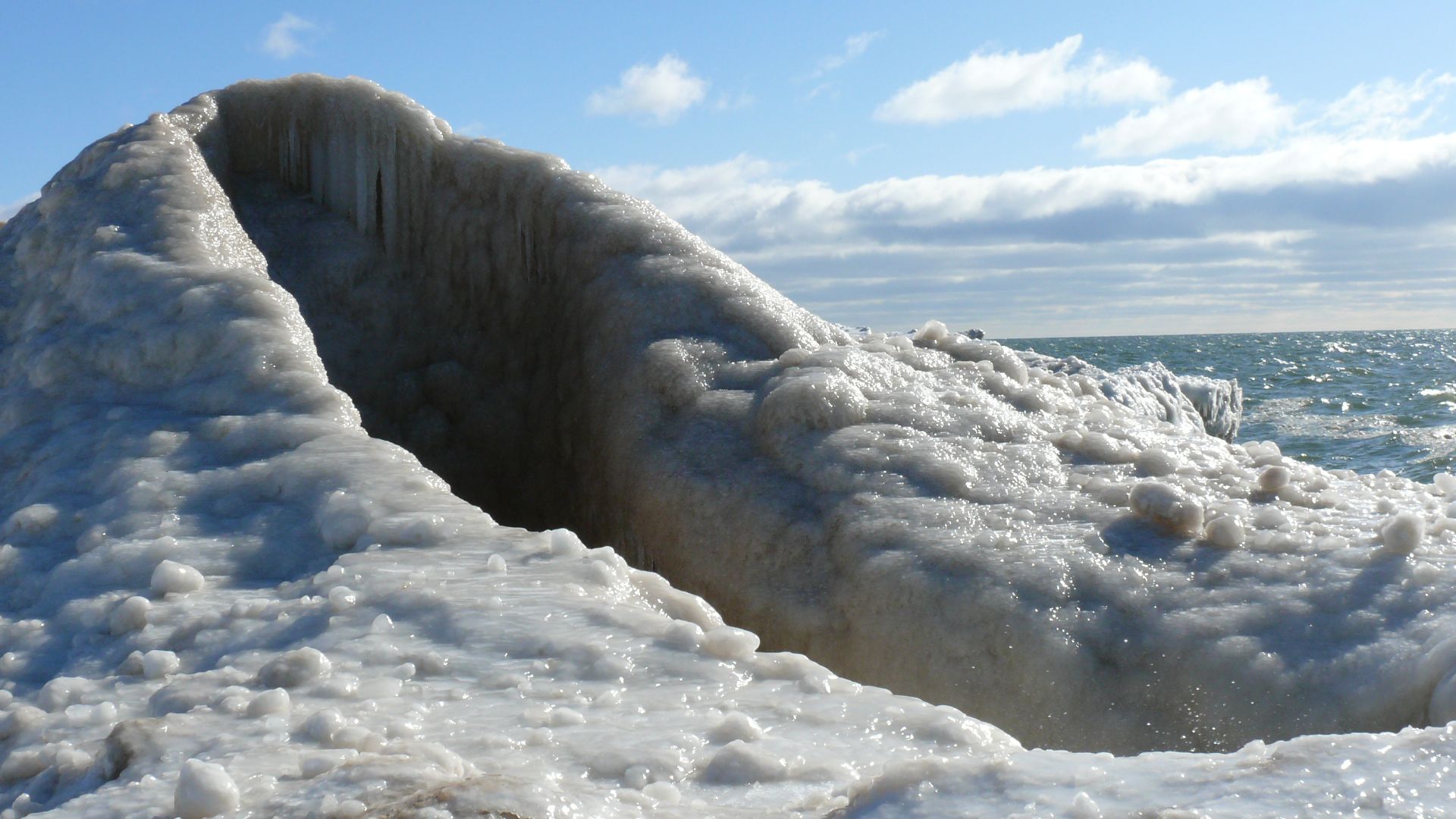 John Winkelman, Wikimedia Commons
John Winkelman, Wikimedia Commons
The Glowworm Caves Of Pickett State Park, Tennessee
Walk into a cave, dim the lights, and you’ll find stars above. But they are, in fact, glowworms clinging to the ceiling with a ghostly blue-green light. It’s Tennessee’s underground galaxy. You’ll swear you're in a scene from Avatar.
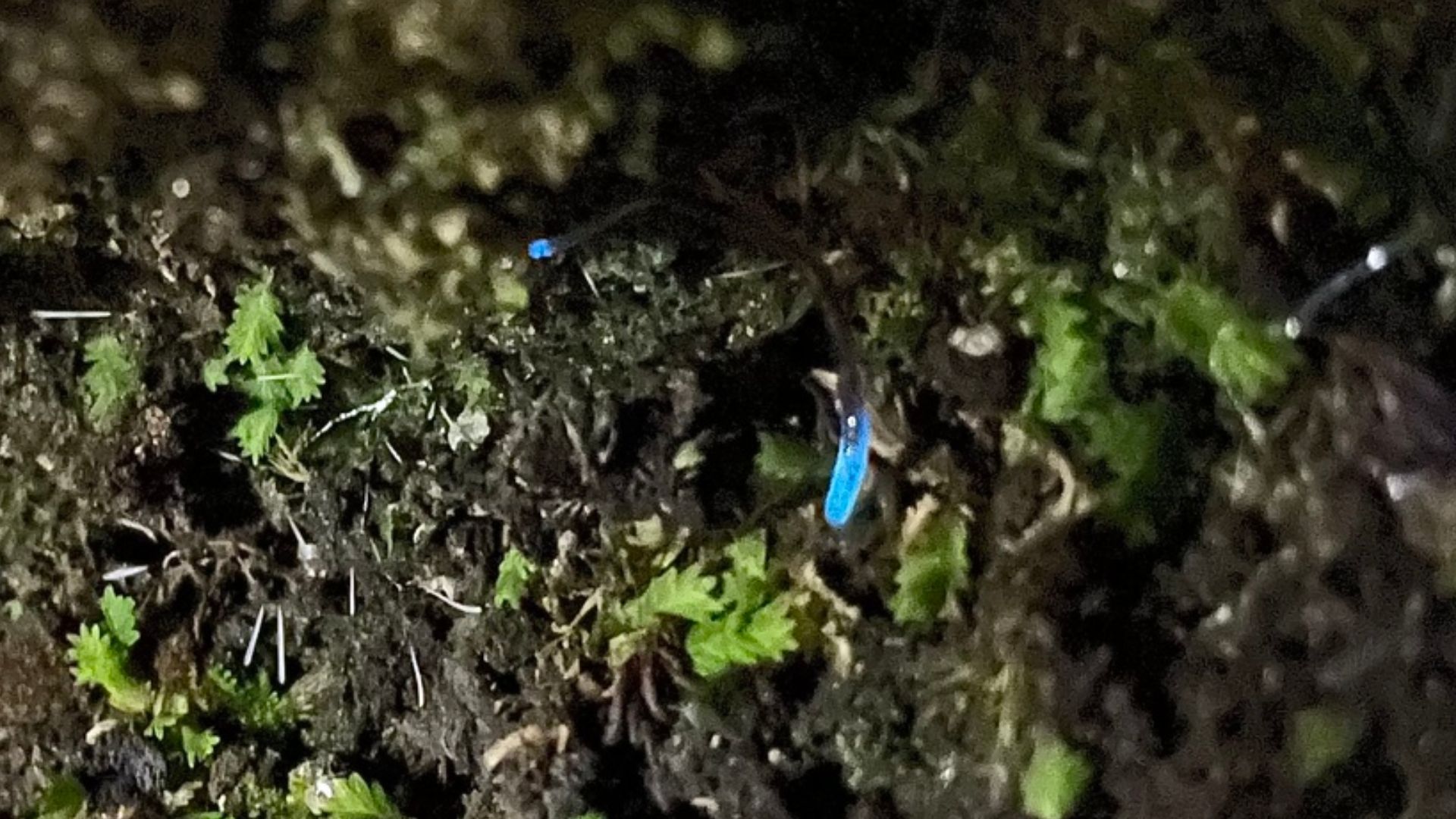 Marek, Paul, Wikimedia Commons
Marek, Paul, Wikimedia Commons
The Light Pillars Of Hudson, Wisconsin
Streetlights suddenly shoot heavenward like gold-plated skewers. In Wisconsin winters, hexagonal ice crystals reflect city lights vertically to create radiant pillars in the sky. Even skeptics stare, jaws dropped. Who knew cold air could stage such drama?
The Ice Waterfalls Of Multnomah Falls, Oregon
Want to see a waterfall that’s frozen? Head on to Multnomah, Oregon’s gem, which transforms into a silent icicle fortress each winter. This happens when subfreezing temperatures cause the mist and flowing water to freeze along the rock face.
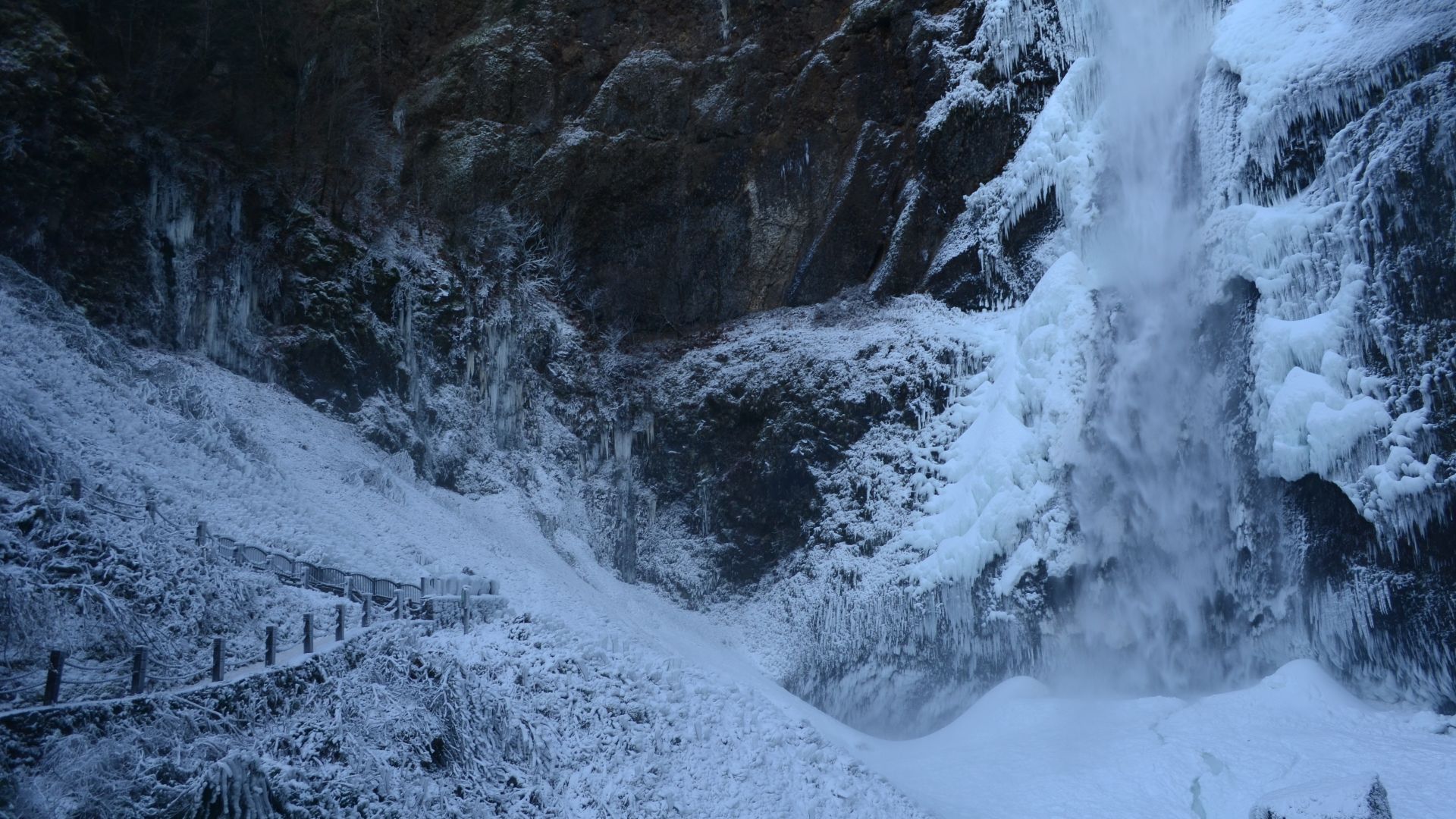 Danielle Henry, Wikimedia Commons
Danielle Henry, Wikimedia Commons
The Ice Volcano Of Letchworth State Park, New York
Fountains in Letchworth freeze. Winter turns a geyser-fed mound into a towering ice cone, often taller than a four-story house. The cone grows steadily as mineral-rich water continues to spray and freeze in layers during sustained temperatures.
The Polar Stratospheric Clouds, Alaska
These clouds drift and shimmer like oil on water. Seen rarely, these nacreous clouds float in the polar stratosphere and reflect sunlight in surreal pastels. Alaska’s winter sky becomes a dessert tray of shimmering mousse tones.
The Lava Flows Of Kilauea Volcano, Hawaii
Kilauea Volcano in Hawaii spills molten rock down its flanks. Locals revere its power, and visitors watch in awe. Each lava flow adds new land to the island, offering scientists a rare chance to study active volcanic processes up close.
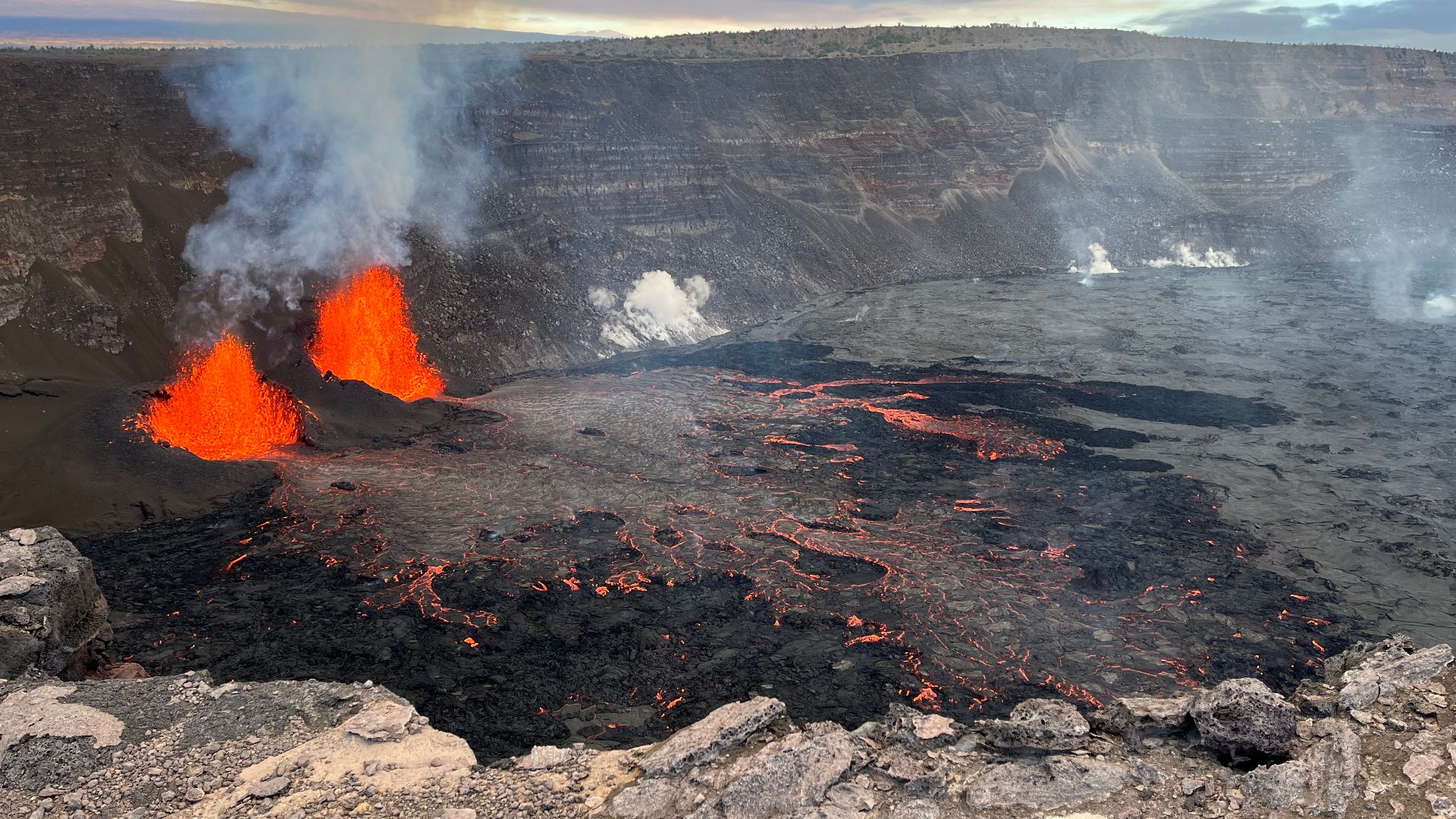 USGS/K. Lynn, Wikimedia Commons
USGS/K. Lynn, Wikimedia Commons
The Hoodoos Of Bryce Canyon, Utah
These sandstone towers (called hoodoos) rise tall and twisted. This process starts with the deposition of rocks and then the uplifting of the land. Finally, weathering and erosion take center stage. The result is a spectacle of spindly-shaped rocks.
The Glacial Fjords Of Tracy Arm, Alaska
Carved deep by ancient glaciers, these icy fjords cut through Alaska like butter. Towering cliffs flank brilliant teal waters, with chunks of ice cracking into the sea. Watch quietly and take multiple snaps of the seals that nap here.
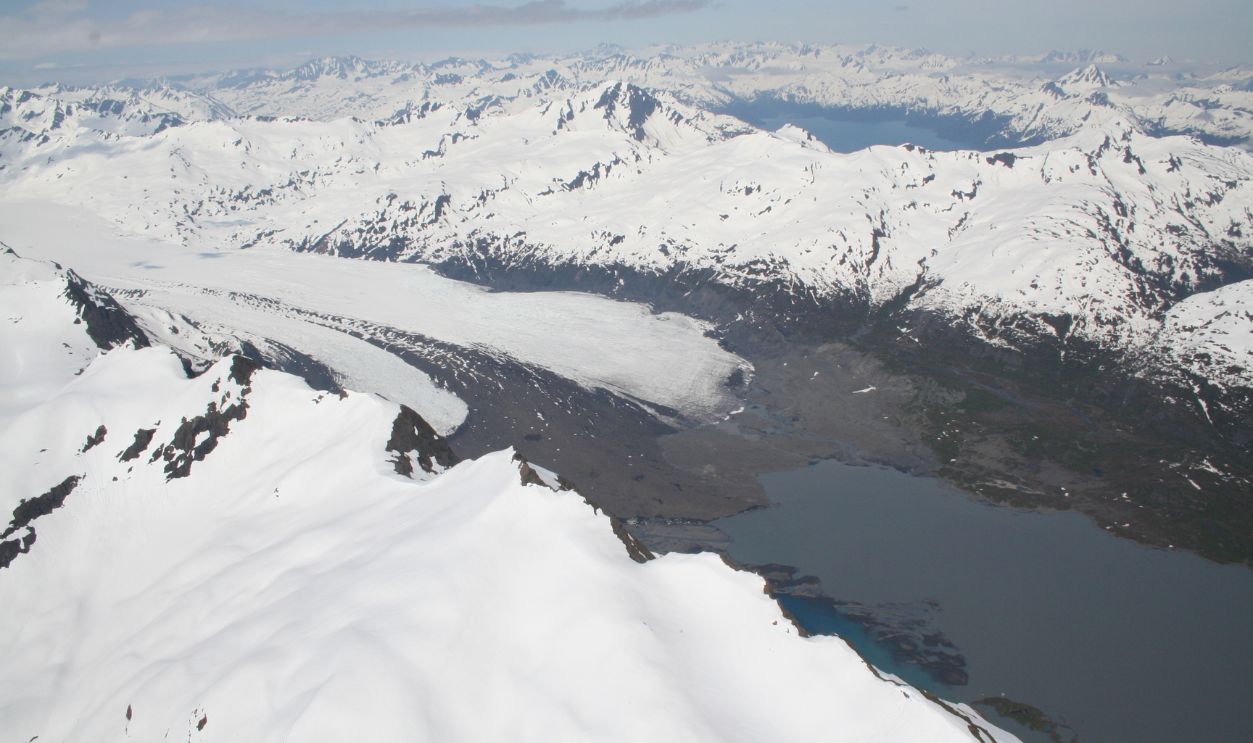 National Park Service, Alaska Region, Flickr
National Park Service, Alaska Region, Flickr
The Painted Desert's Vibrant Badlands, Arizona
Now, this is a color palette straight from a candy shop. The Painted Desert's hills have layers of lavender, rust, rose, and cream. These vivid bands are almost a million years old and reveal the Earth’s ancient environments and shifting climates.
The Slot Canyons Of Antelope Canyon, Arizona
Step inside these twisting, red-rock canyons, and you’ll feel like you’ve been poured into a lava lamp. Sunlight slinks through cracks to form golden beams. Formed by flash floods, these canyons are intimate and constantly changing.
 Lucas Löffler, Wikimedia Commons
Lucas Löffler, Wikimedia Commons
The Petrified Forest National Park, Arizona
What were once living trees now shimmer with quartz, agate, and jasper. These fossilized trunks date back 225 million years. The park safeguards one of the globe's largest collections of petrified wood from the Late Triassic period.
The Great Sand Dunes National Park, Colorado
Towering up to 750 feet, these dunes ripple downhill in graceful waves. Constant winds sculpt their shifting forms, and this makes them the tallest dunes in North America. The best part? Visitors can hike, sled, or sandboard across this terrain.
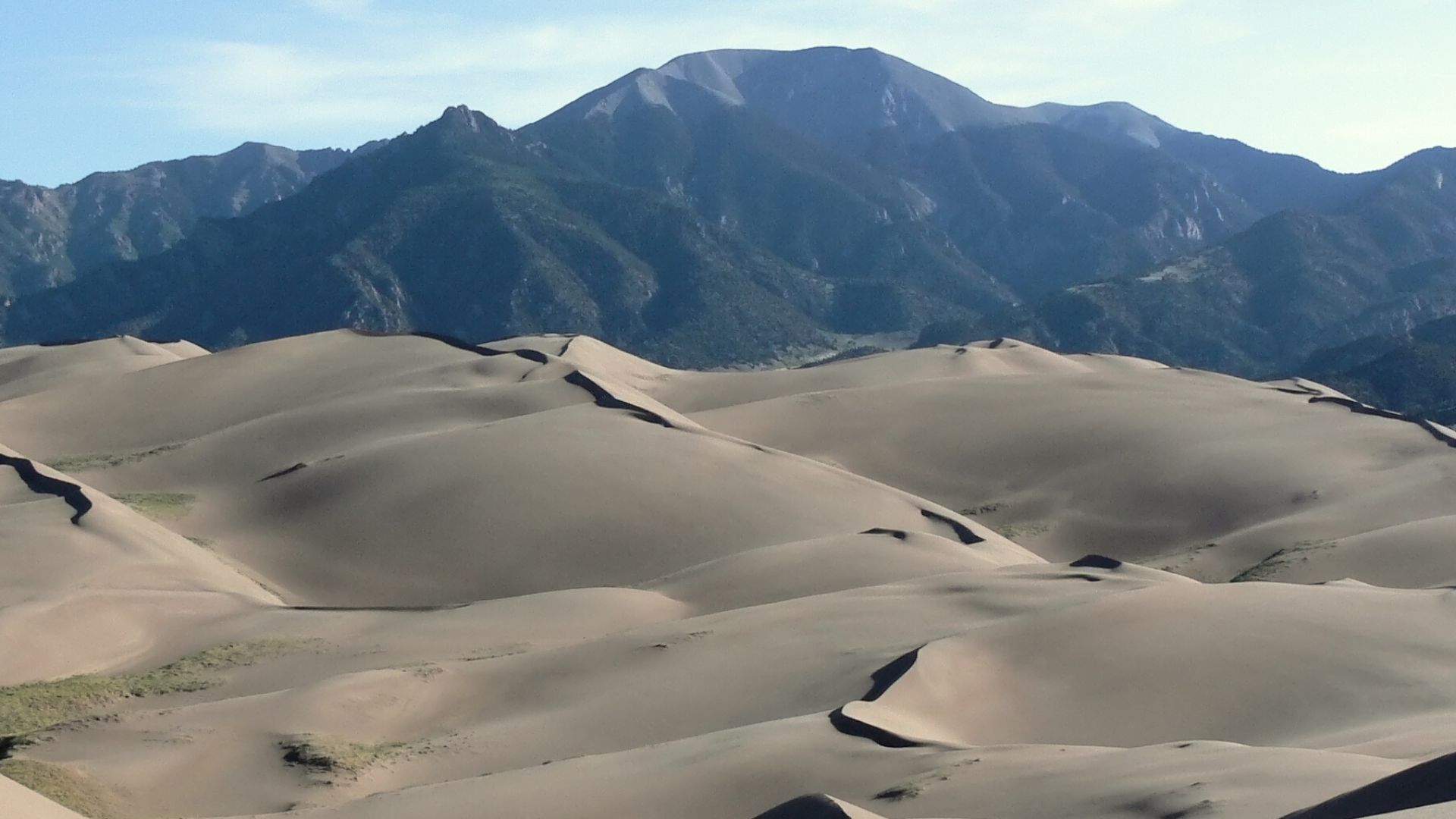 Preiselbeere (talk), Wikimedia Commons
Preiselbeere (talk), Wikimedia Commons
The Natural Bridge, Virginia
Carved by Cedar Creek, this 215-foot natural limestone arch formed through millennia of erosion. Once owned by Thomas Jefferson, it now frames the sky. Today, it’s a registered National Historic Landmark and a key feature of Virginia’s State Park.
The Maroon Bells's Reflective Peaks, Colorado
The Maroon Bells are among Colorado’s most photographed peaks. Twin summits reflect clearly in a still alpine lake, especially in autumn. Their dramatic beauty and accessibility make them a signature landmark of the Elk Mountains.
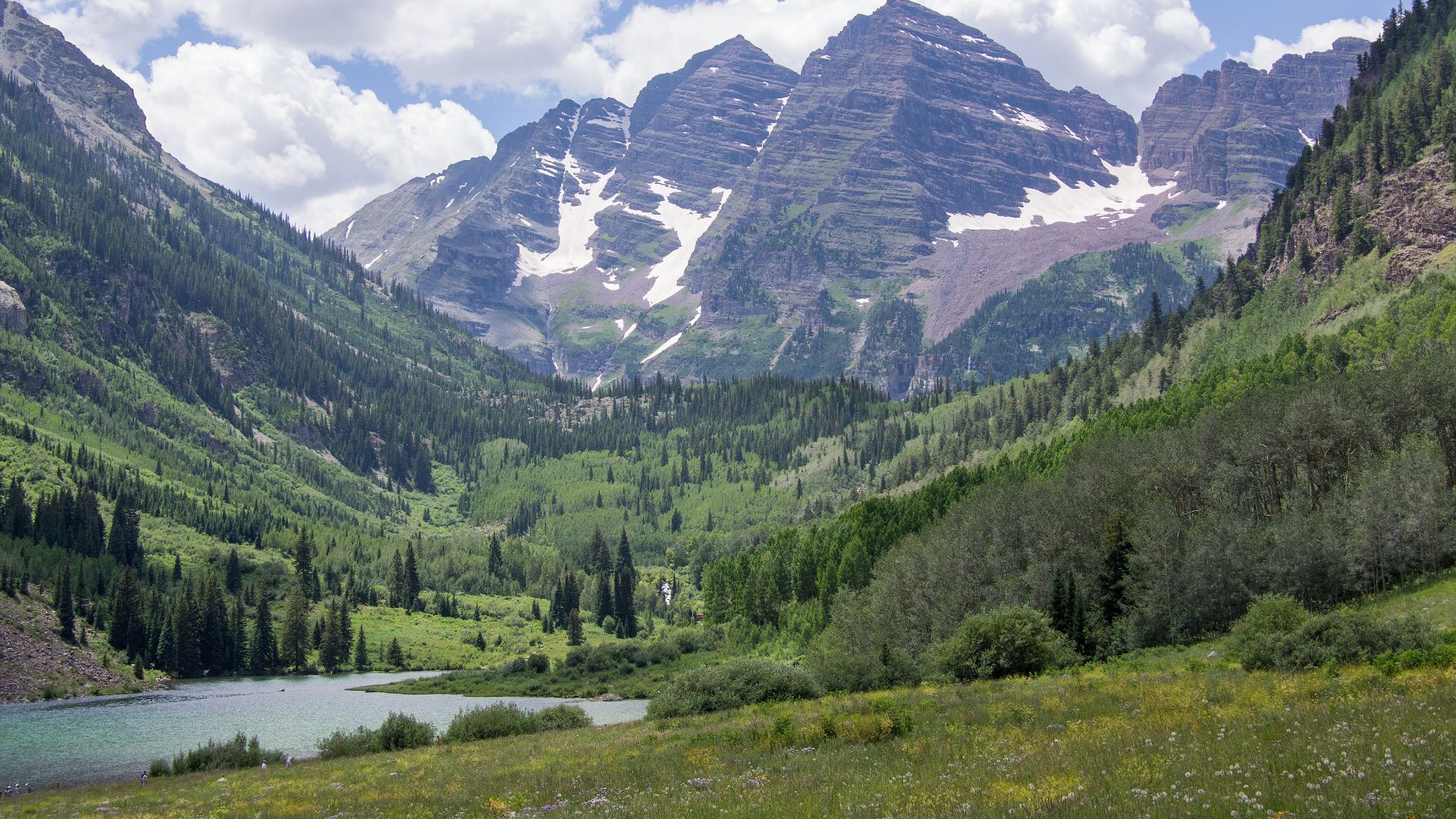 Rhododendrites, Wikimedia Commons
Rhododendrites, Wikimedia Commons
The Crater Lake's Deep Blue Waters, Oregon
After Mount Mazama's volcanic collapse, Crater Lake was formed around 7,700 years ago. This lake contains some of the clearest and purest water in the world, fed only by rain and snow. The lake also remains chemically stable today.
The Drumheller Channels, Washington State
These basalt canyons, channels, and knobs twist across central Washington, formed when massive Ice Age floods reshaped the landscape. The Missoula Floods, which occurred over 15,000 years ago, carved through layers of volcanic rock to create the Channeled Scablands.
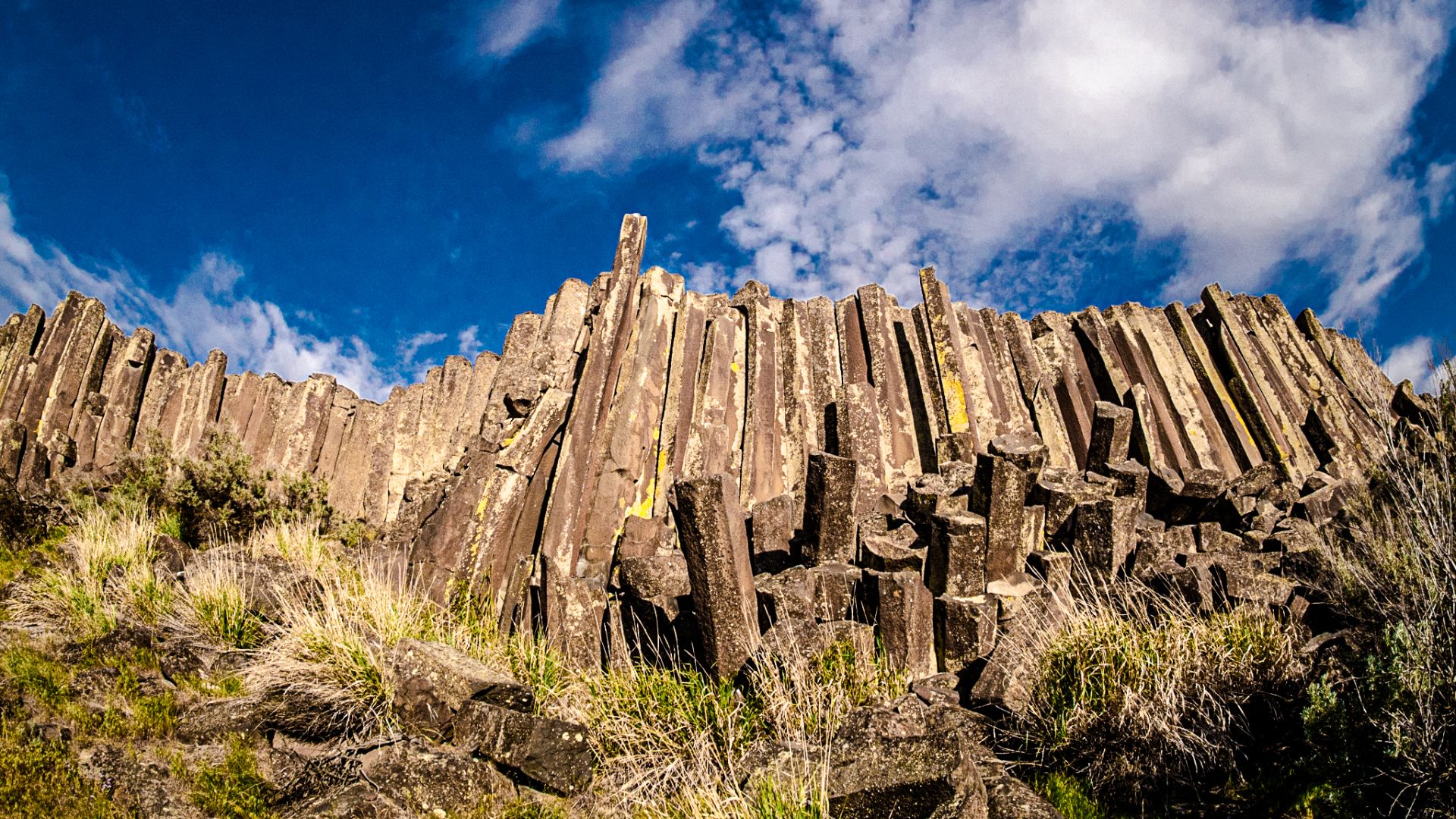 Parkfreeon6th, Wikimedia Commons
Parkfreeon6th, Wikimedia Commons
The Geysers Of Yellowstone National Park, Wyoming
Yellowstone’s geysers explode. Old Faithful erupts like a soda shaken too long, blasting boiling water 100–180 feet high. Underneath lies a massive underground cauldron. Here, you’re basically walking in Earth’s kitchen, which is hot and volatile.
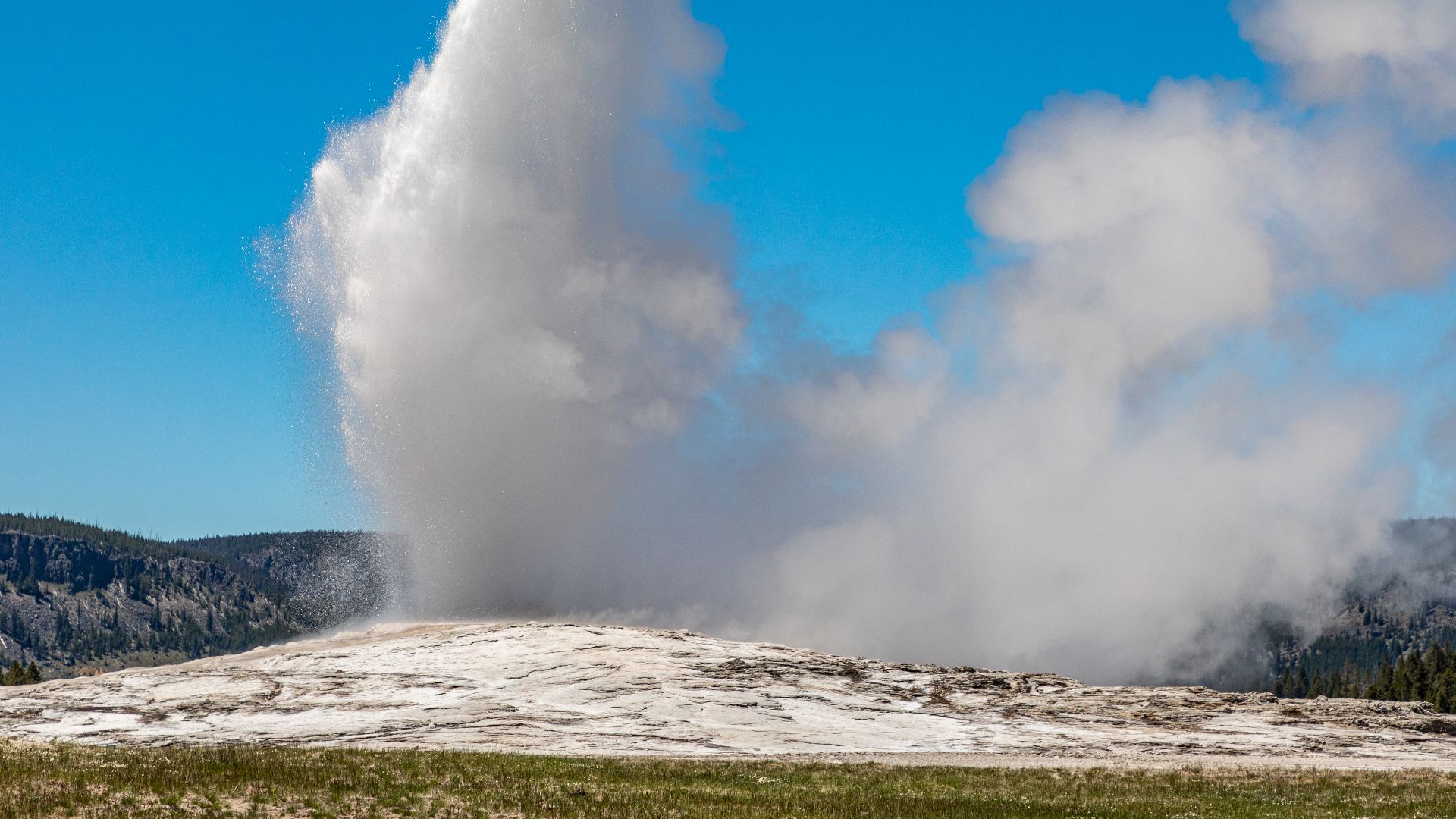 Dietmar Rabich, Wikimedia Commons
Dietmar Rabich, Wikimedia Commons
The Ice Caves Of Big Four Mountain, Washington
Each summer, snowfields melt and reshape themselves into icy cathedrals under Big Four Mountain. Inside, they glow blue, echo cold whispers, and slowly shift. These ice caves are hazardous and prone to sudden collapse, so entry is often prohibited.
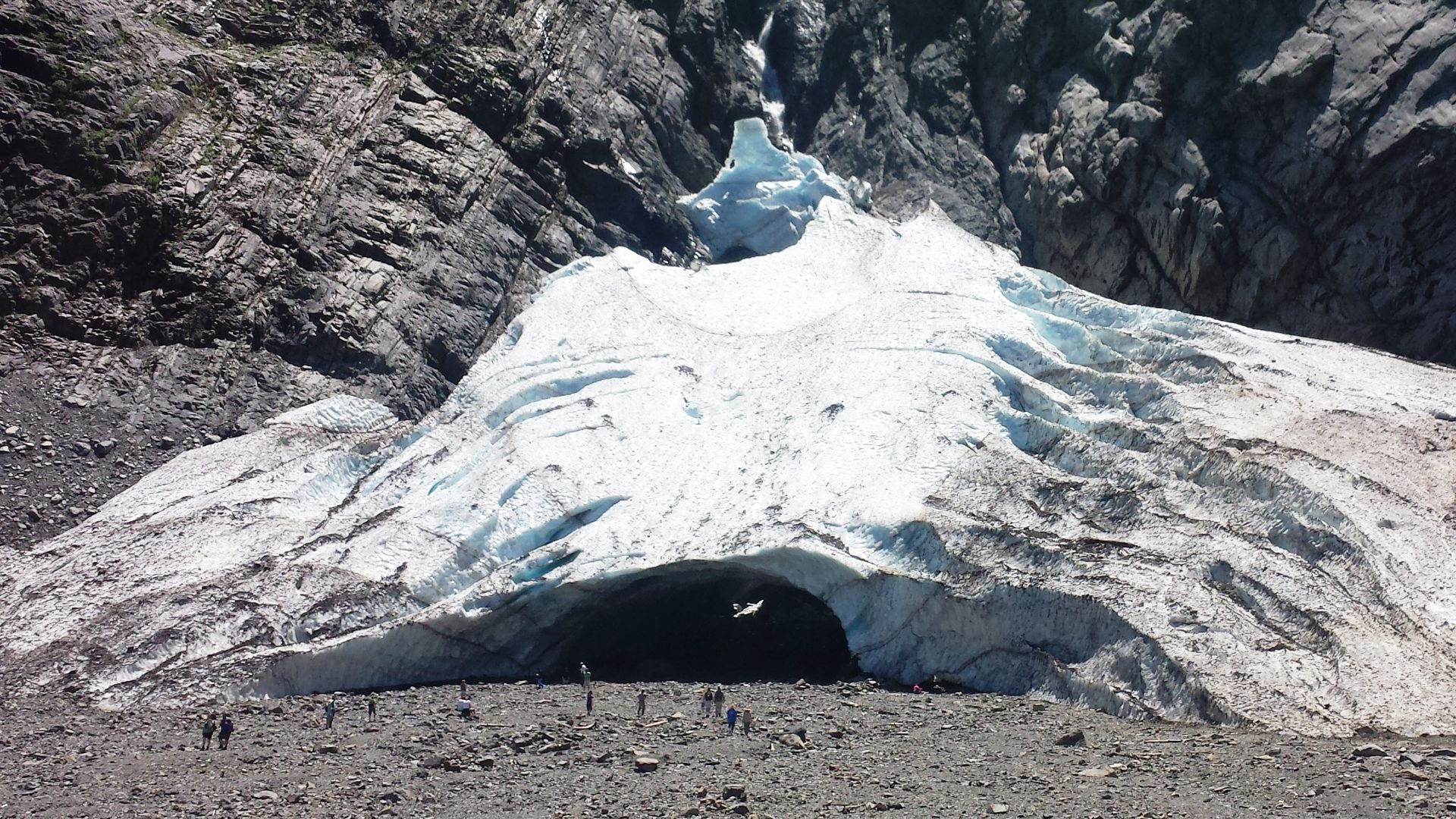 brewbooks from near Seattle, USA, Wikimedia Commons
brewbooks from near Seattle, USA, Wikimedia Commons
The Fly Geyser's Colorful Terraces, Nevada
Created accidentally by a drilling mishap, Fly Geyser spews steaming water and deposits minerals that layer into technicolor terraces. Reds, greens, oranges—this locale is remote and weirdly mouthwatering to look at.
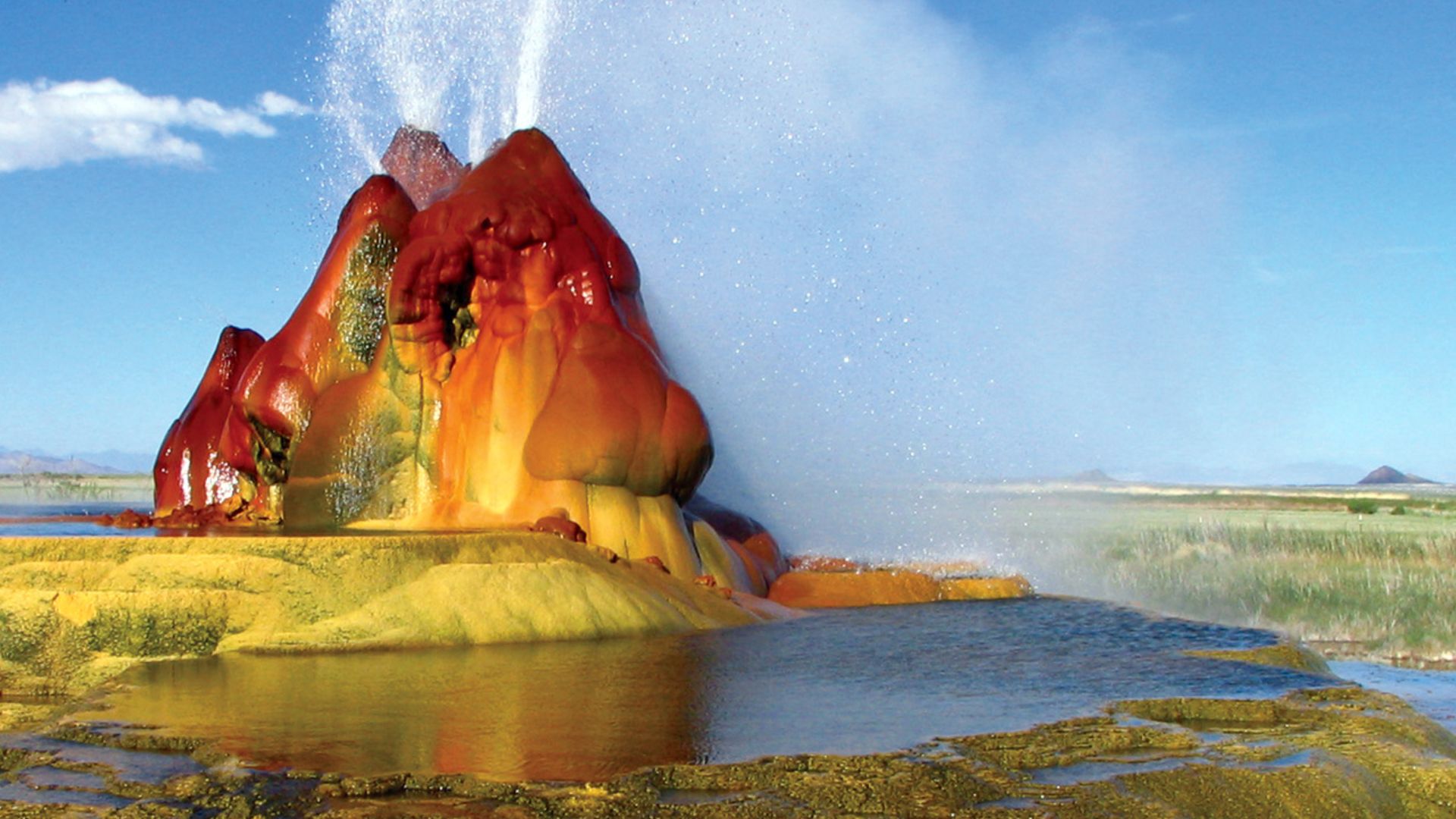 Jeremy C. Munns, Wikimedia Commons
Jeremy C. Munns, Wikimedia Commons
The Devil's Tower's Monolithic Formation, Wyoming
Devil's Tower is a striking igneous formation that rises 867 feet above the surrounding terrain. Formed from cooled magma exposed by erosion, it’s both a sacred site to Indigenous tribes and a popular climbing destination.
The Sea Turtles's Nesting On Padre Island, Texas
Under the moonlight on Padre Island, tiny Kemp’s ridley sea turtle hatchlings make their way across the sand to the Gulf of Mexico. Once critically endangered, these turtles are now part of a closely monitored conservation effort.
The Whirlpool Rapids Of The Niagara River, New York
After Niagara Falls, the river tightens and churns itself into a ferocious swirl. It’s like a blender set too high where the Class VI rapids twist with such force they shape whirlpools that can snap boats. The best vintage spot is watching from above.
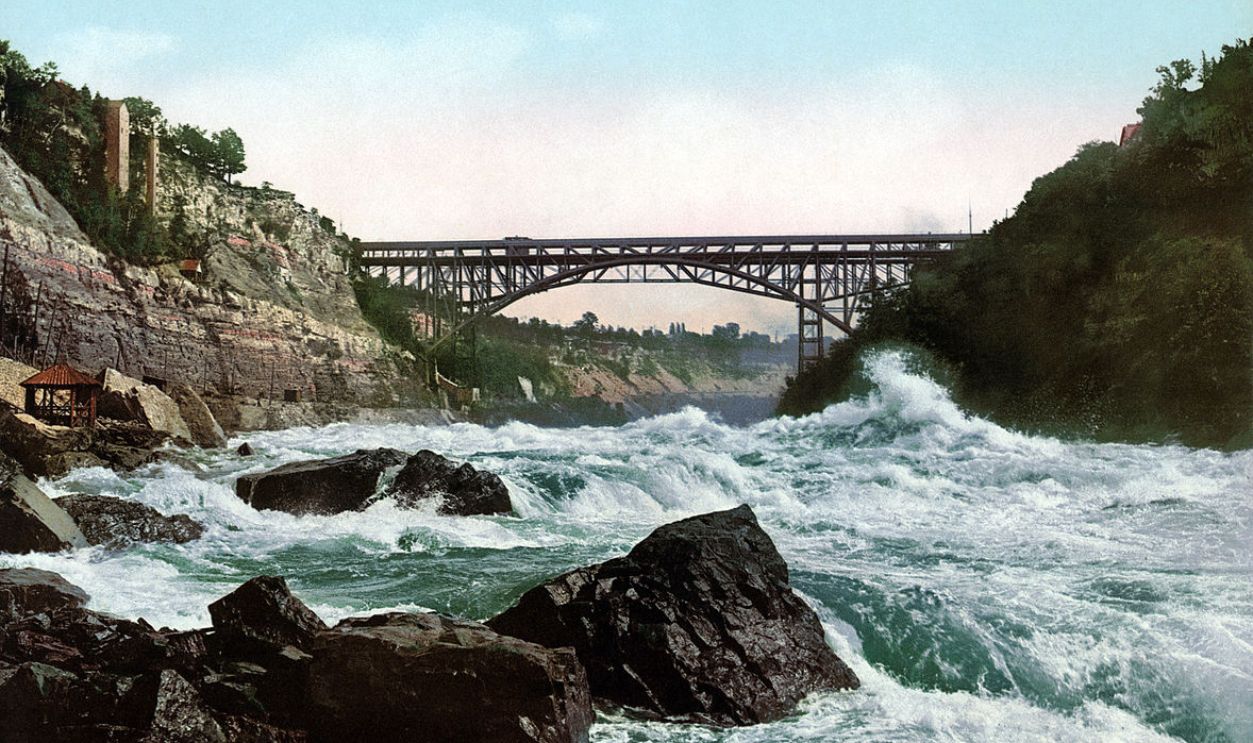 Detroit Publishing Co., Wikimedia Commons
Detroit Publishing Co., Wikimedia Commons
The Midnight Sun Over Barrow, Alaska
Sleep’s off the menu in Barrow come summer. For more than two months, the sun doesn’t set, but it just hovers. Locals mow lawns at 2 am, cook dinner in daylight, go for jogs, and wave good night before the night ever shows up.
The Dust Storms, The Great Plains
Out on the Plains, when the wind kicks up, it roars, hauling curtains of dust that swallow sunlight and slap visibility down to zero. These storms, called haboobs, are fast-moving wall-like dust fronts caused by downdrafts from intense thunderstorms.
The Nor'easters, The East Coast
East Coast winters? They come plated with fury. Nor’easters whip in off the Atlantic to slather cities with snow and ice. Their storms shut down schools and slam seaboards. Think of them as nature’s comforting but a bit violent casserole.
The Atmospheric Rivers, The West Coast
Stretching thousands of miles, atmospheric rivers hit California’s flood valleys and top levees. These narrow bands of concentrated moisture can carry more water than the Mississippi River and are responsible for a significant percentage of the state’s annual precipitation.
The Marfa Lights, Texas
In the vast expanse of West Texas, near Marfa, mysterious orbs of light dance on the horizon. They appear unpredictably, hovering, splitting, and merging without a clear source. Some attribute them to atmospheric reflections, while others mystify them.
The Wave, Arizona
The Wave is a sandstone formation. This natural masterwork, formed over millions of years by wind and water erosion, attracts hikers and photographers. Access is strictly regulated to protect its fragile structure for future generations.
The Quechee Gorge, Vermont
Often referred to as Vermont's "Little Grand Canyon," the Quechee Gorge offers a dramatic view carved by glacial activity approximately 13,000 years ago. Spanning 165 feet deep, the gorge showcases the power of natural forces in shaping the terrain.
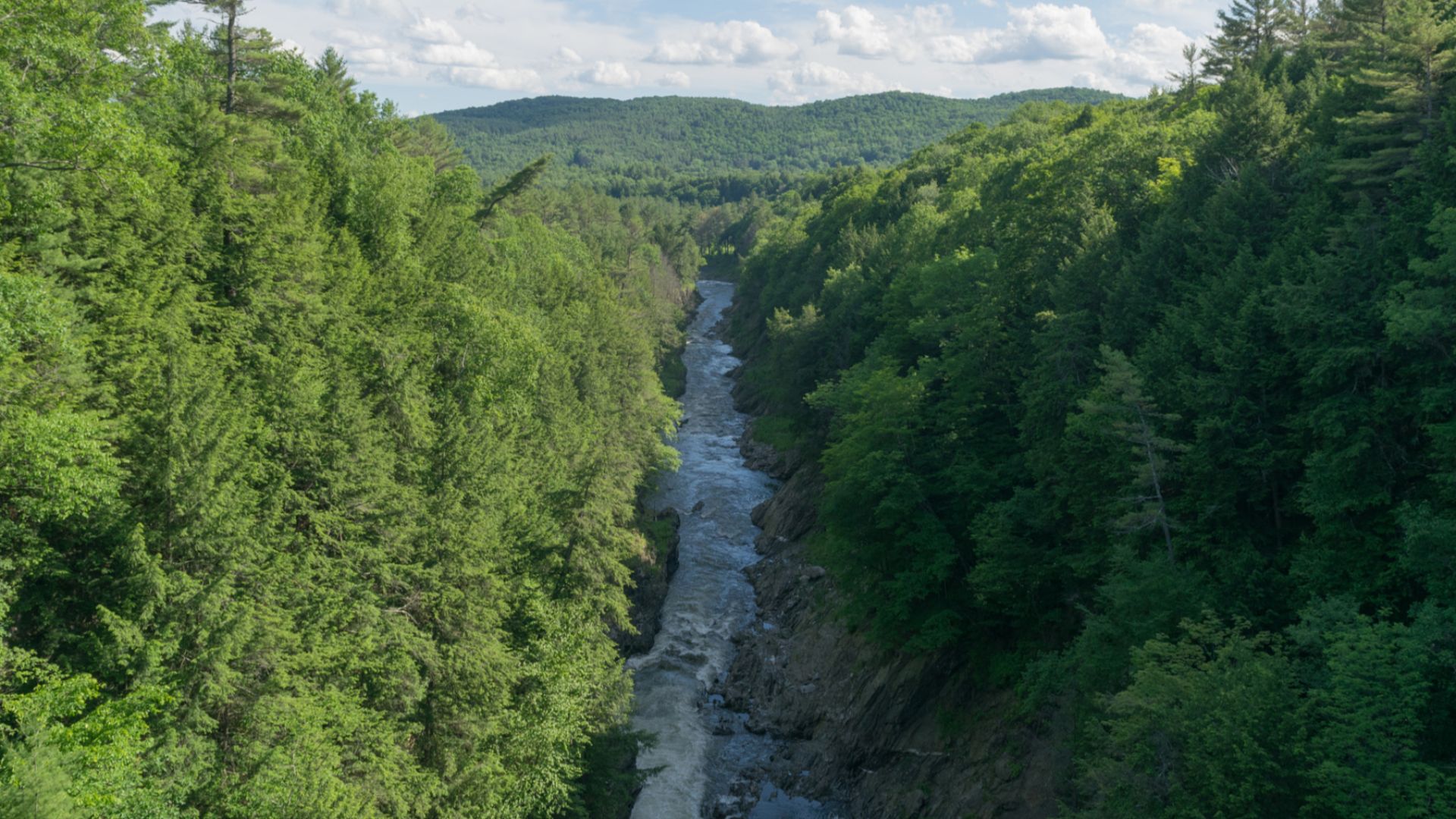 Matthew Bellemare, Wikimedia Commons
Matthew Bellemare, Wikimedia Commons
The Polar Vortex, The Northern United States
The polar vortex is a mass of cold, dense air that circulates around the Arctic but occasionally shifts southward into the US to bring extreme cold. When this Arctic air descends, cities from Chicago to Minneapolis experience subzero temperatures.
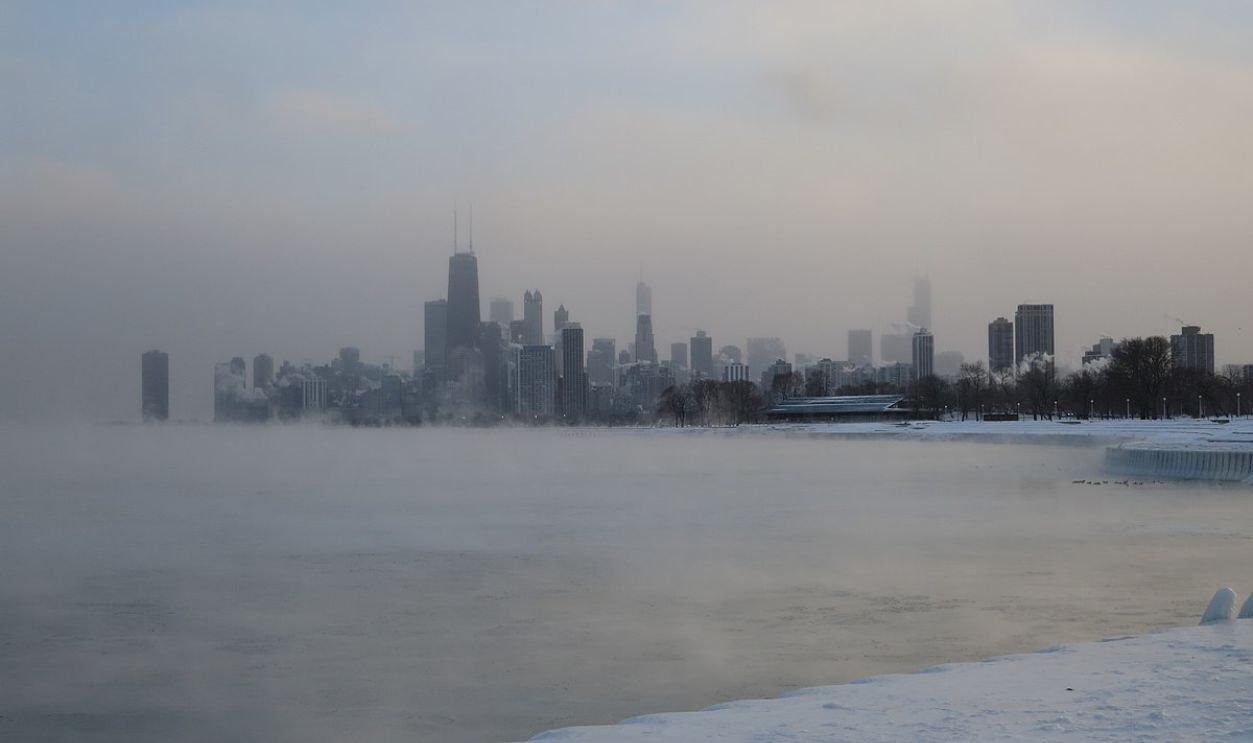 edward stojakovic, Wikimedia Commons
edward stojakovic, Wikimedia Commons

